-
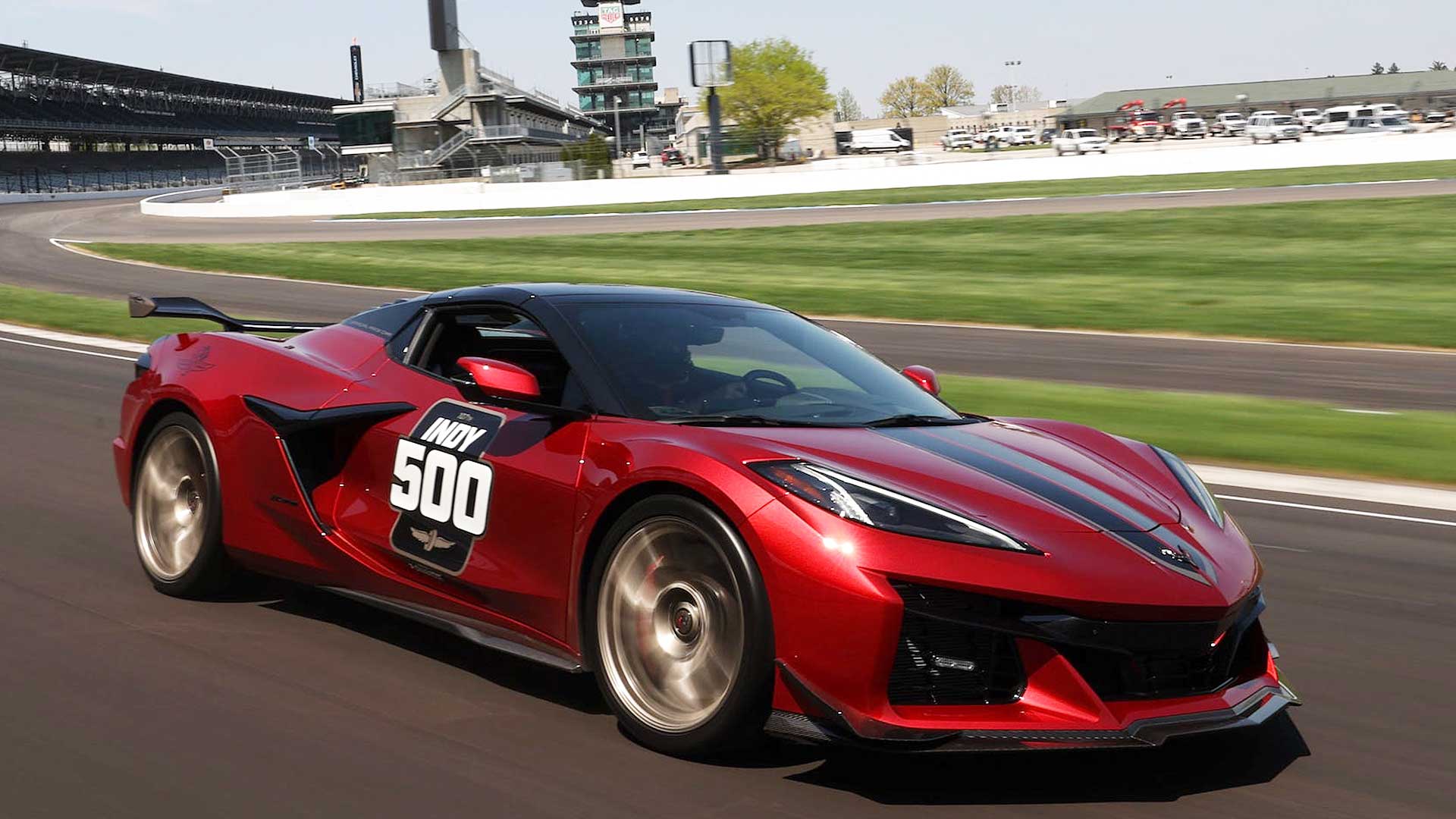
A guaranteed way to lead the Indy 500
© ChevroletThe mid-engined Chevrolet Corvette Z06 Convertible will lead the field for this year’s Indy 500 race. It will be the 34th time a Chevrolet has undertaken this role since 1911.
Having a car or SUV (or even a truck) used as the official pace car means it will be seen by thousands of fans at the track, and millions more on TV around the world. As a result, the role of Indy 500 pace car has become a major marketing opportunity.
Ahead of the 107th Indianapolis 500 on Sunday 28 May, join us for a look at the highs and lows of Indy 500 pace car history.
-
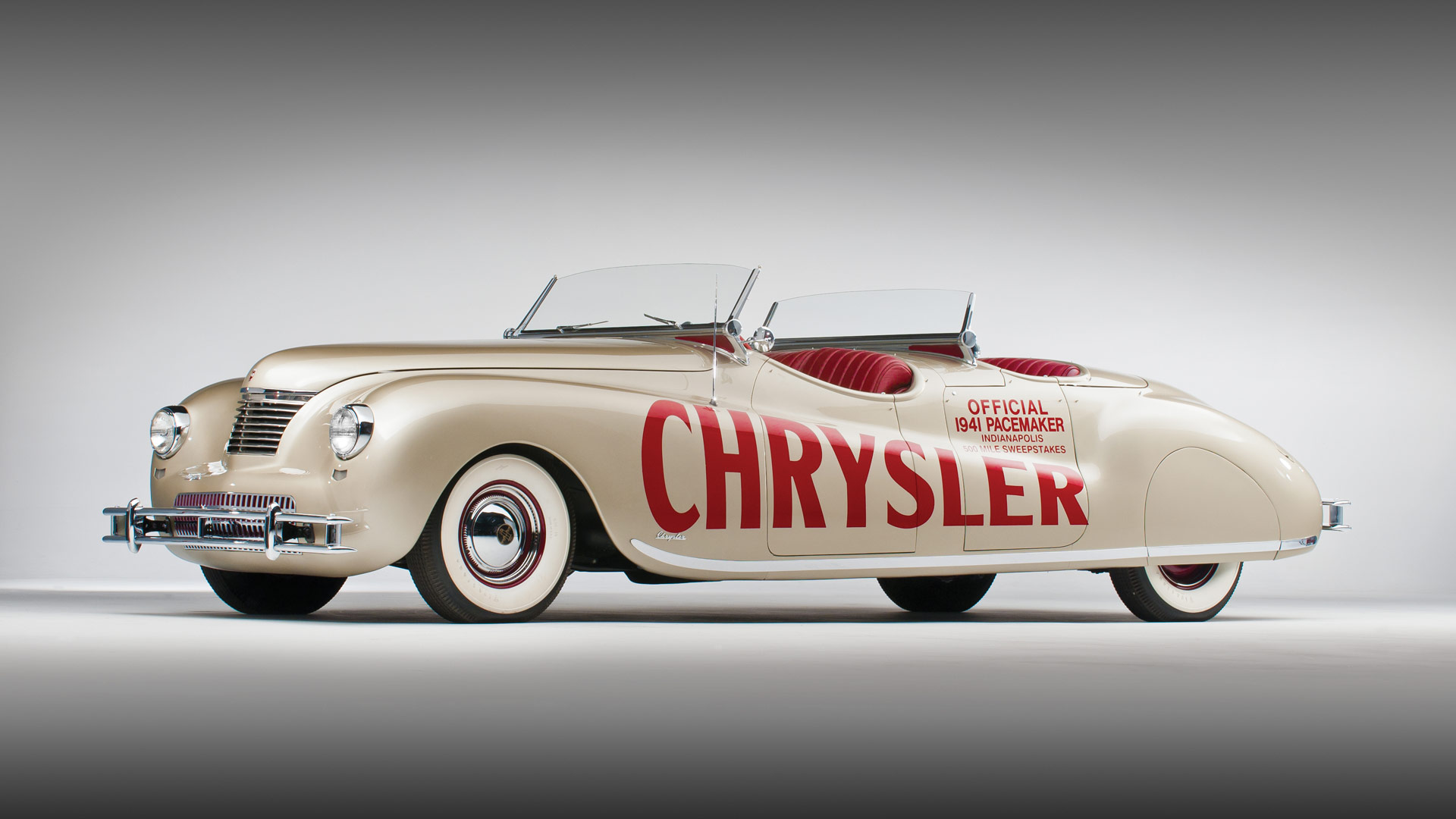
1941 Chrysler Newport Phaeton
© Darin Schnabel - RM SothebysAs noted, the Indy 500 has used a pace car since the event began in 1911. However, we have skipped forward in time to the 1941 race, which saw the beautiful Chrysler Newport Phaeton lead the pack.
Wearing bodywork by LeBaron, and powered by a 354-cubic inch inline-eight engine, the Newport Phaeton was remarkably rare. Six cars in total are said to have been produced, with the pace car later used by Walter P. Chrysler himself.
The original pace car was restored in 2009, and listed at auction by RM Sotheby’s for the 2012 Amelia Island sale. It failed to sell, with an estimated auction price of $1.5 to $2 million.
-
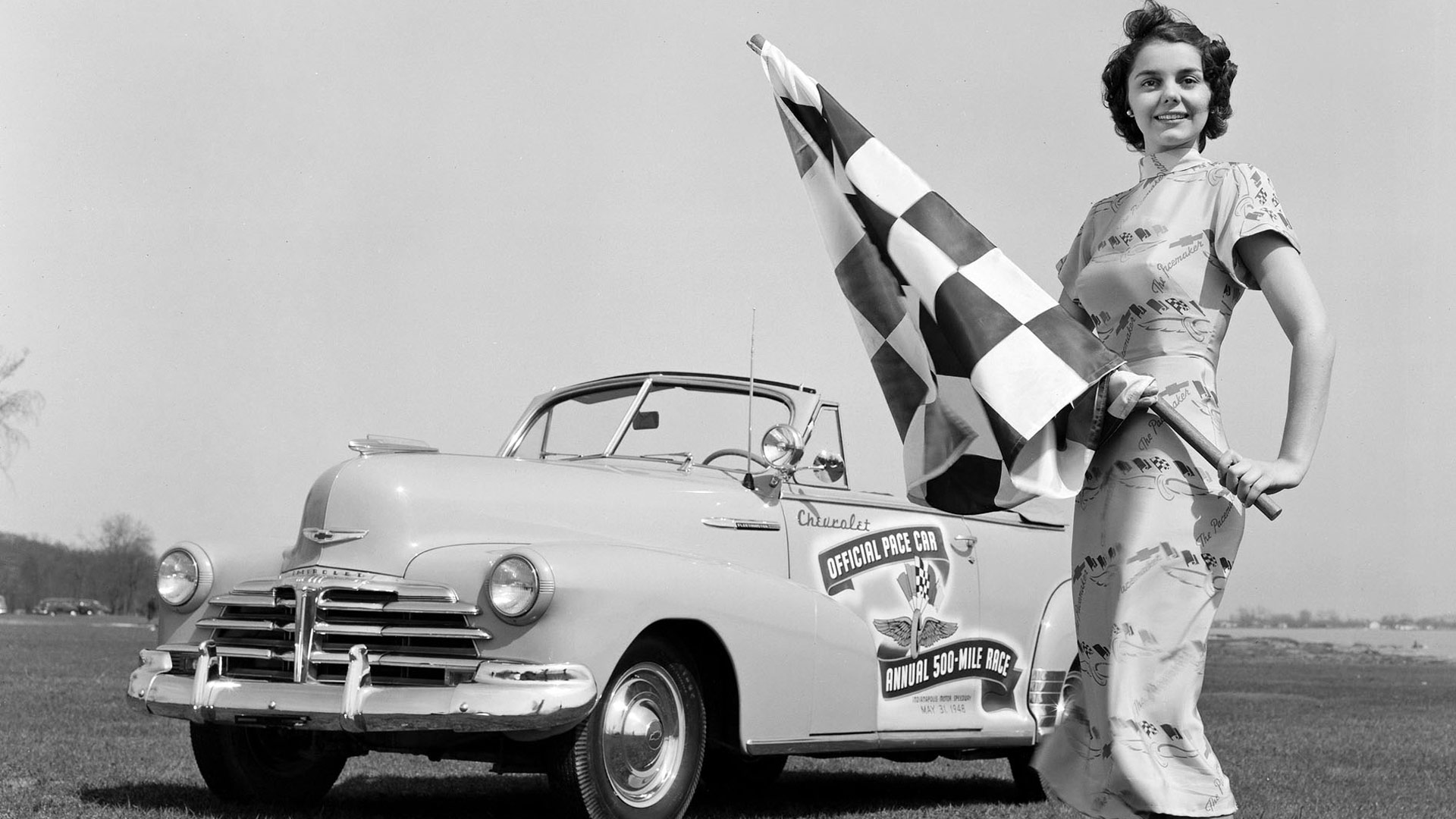
1948 Chevrolet Fleetmaster Six
© ChevroletChevrolets may now be a regular occurrence as Indy 500 pace cars, but the 1948 Fleetmaster Six marked a debut for the Bowtie brand.
A development of the pre-war Chevrolet Deluxe, the Fleetmaster Six was offered in a range of body styles. In common with most other pace cars of the time, an open-top convertible was the vehicle of choice, to make marshalling the race start easier.
Although picked as the Indy 500 pace car, Chevrolet opted to discontinue the Fleetmaster Six at the end of 1948.
-
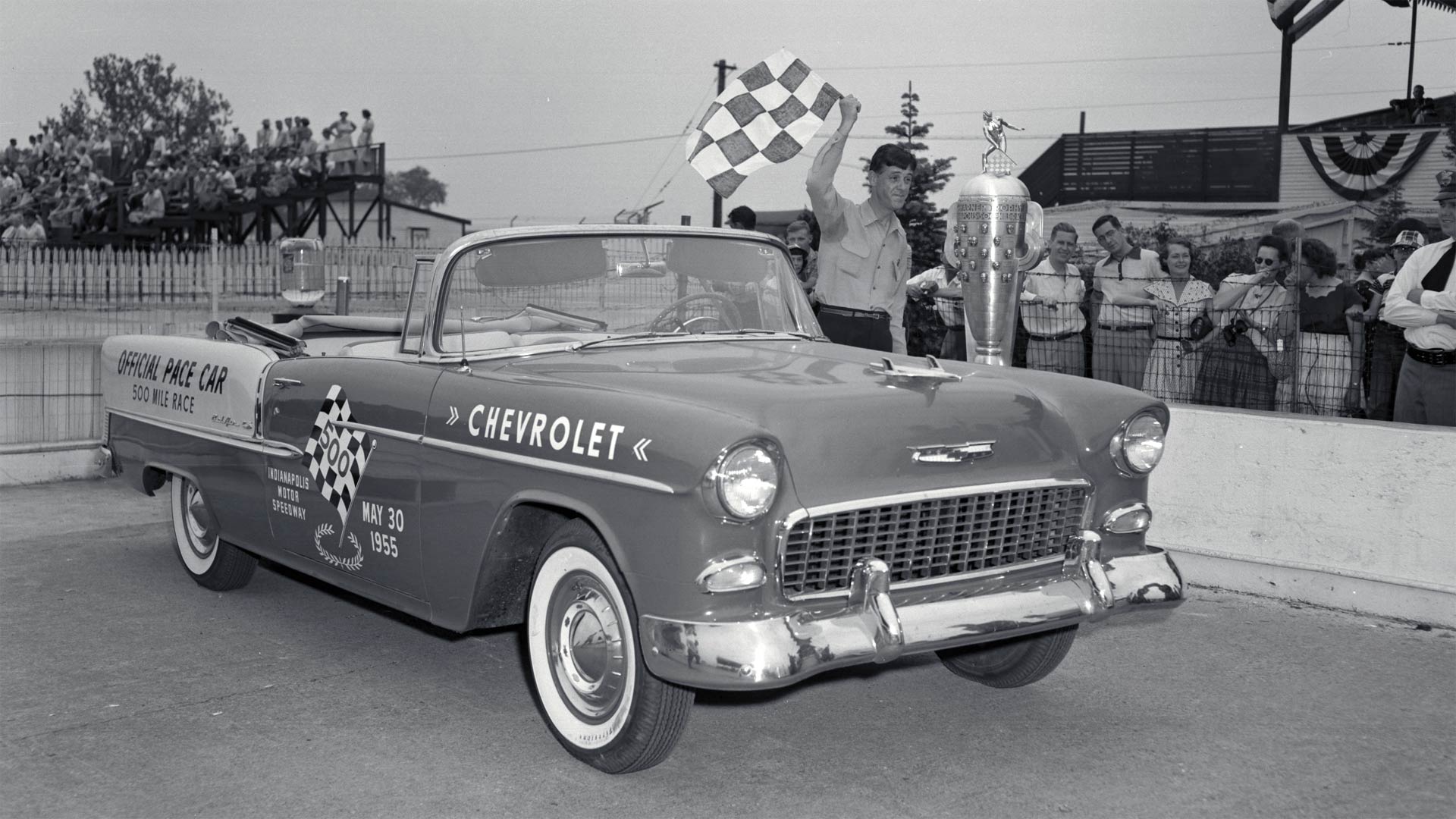
1955 Chevrolet Bel Air
© ChevroletAs one of the most recognizable American cars of the 1950s, it should be no surprise that the 1955 Chevrolet Bel Air made our list. The second-generation Bel Air was launched for 1955, boasting a modern exterior and the option of a 265-cubic inch V-8 under the hood.
The 1955 Indy 500 would be remembered for the death of Bill Vukovich in an accident whilst leading the race. Vukovich had won the previous two Indy 500s, and was seemingly on his way to another victory when tragedy struck.
His death would contribute to the American Automobile Association withdrawing from sanctioning the Indy 500. The United States Auto Club was duly formed to organize the 1956 event.
-
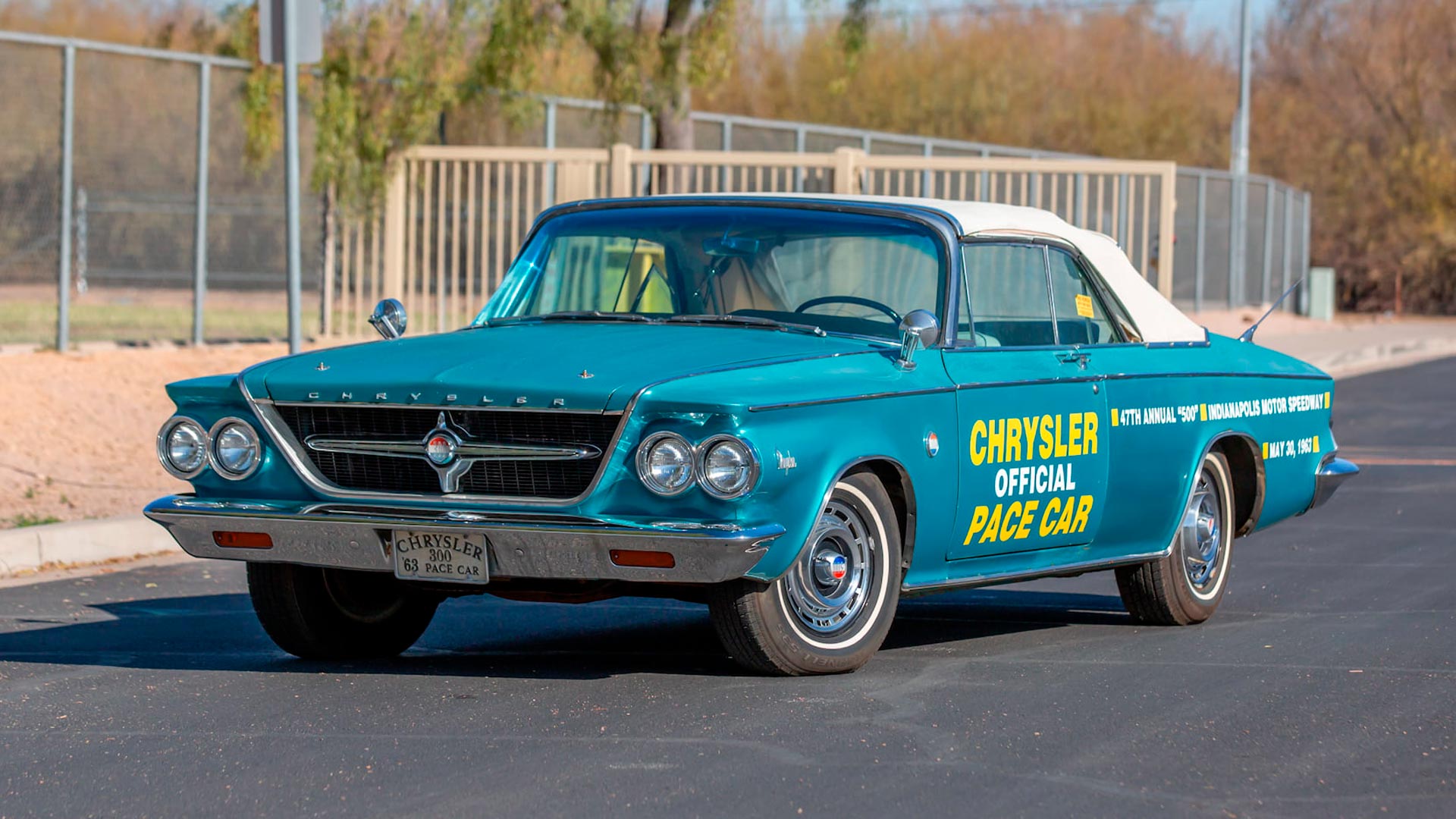
1963 Chrysler 300 Pacesetter Convertible
© MecumCompared to the Chevy Bel Air, Chrysler’s full-size 300 convertible is perhaps one of the more forgettable Indy 500 pacers. Chrysler had introduced the 300 Sport Series the previous year, and used the 1963 race to help promote it.
This included a run of special-edition Pacesetter models, wearing the same graphics as the car that led the field at Indy. A total of 306 coupes, and 1,861 convertibles, were made.
Compared to some pace car editions, the 300 Pacesetter has remained relatively affordable. The car pictured here was sold at the recent Mecum Indy 2021 auction for just $16,500.
-

1964 Ford Mustang
© FordWith Ford opting to launch the original Mustang as an unusual 1964½ model year car, the pony car was just weeks old when it made an appearance as the 1964 Indy 500 pace car. The Mustang pace car was driven by Benson Ford, the son of Edsel Ford, and the Blue Oval had high expectations for the race itself.
British driver Jim Clark had taken pole position for the great race, behind the wheel of a Ford-powered Lotus 34.
Sadly, premature tire wear would cause Clark to retire from the race, with AJ Foyt going on to take victory in his Watson-Offenhauser.
-
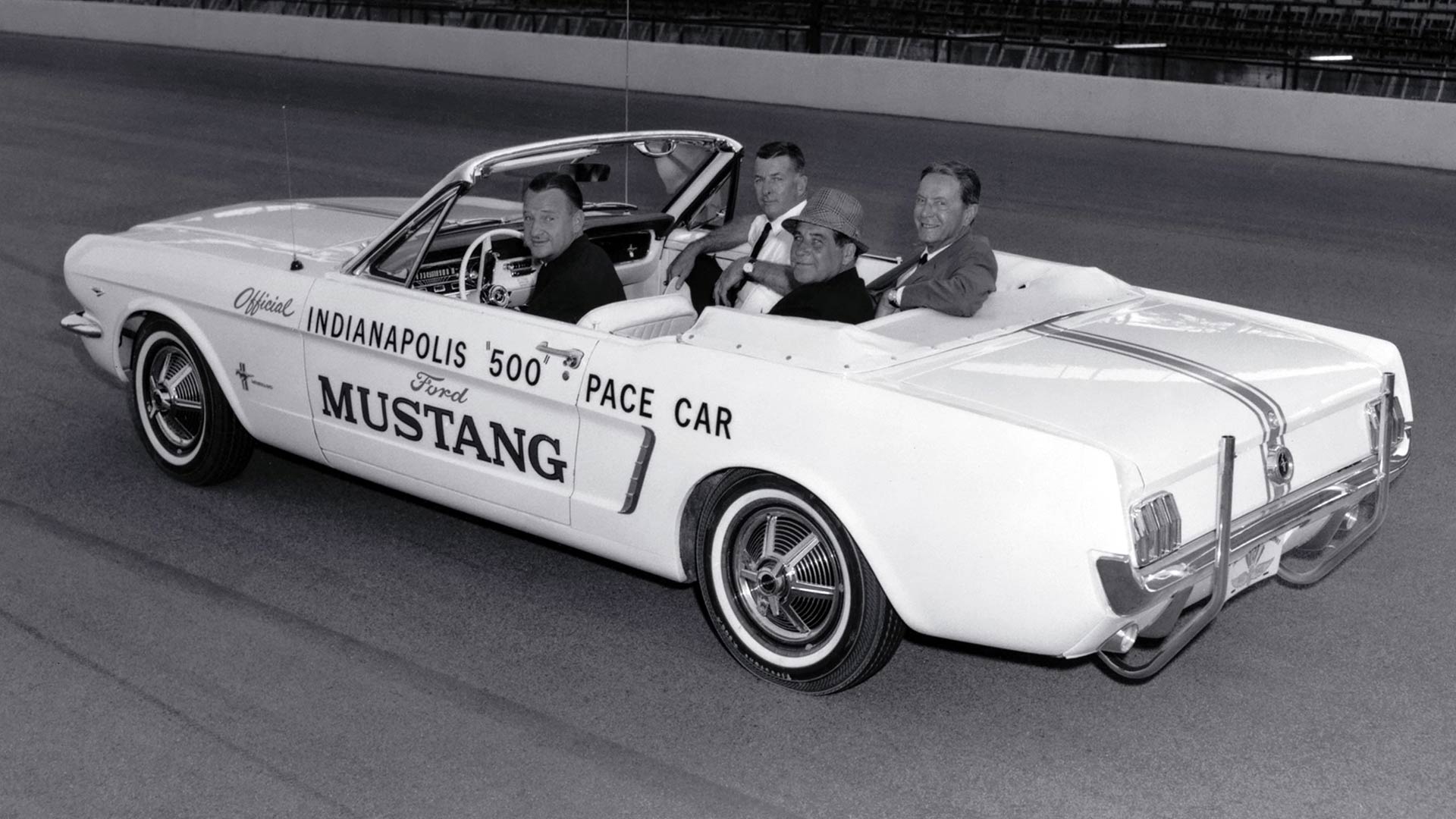
1965 Plymouth Sport Fury
© FordFord would only have to wait a year to get revenge at the Indy 500. The ‘British Invasion’, led by Lotus finally paid off, with Jim Clark leading 190 laps to take the chequered flag with Ford power behind him.
This meant Clark, and Lotus founder Colin Chapman, would take a ride in the Plymouth Sport Fury pace car. Intended to demonstrate the redesigned Fury range, it would be the only time a Plymouth would be used as an Indy 500 pace car.
-
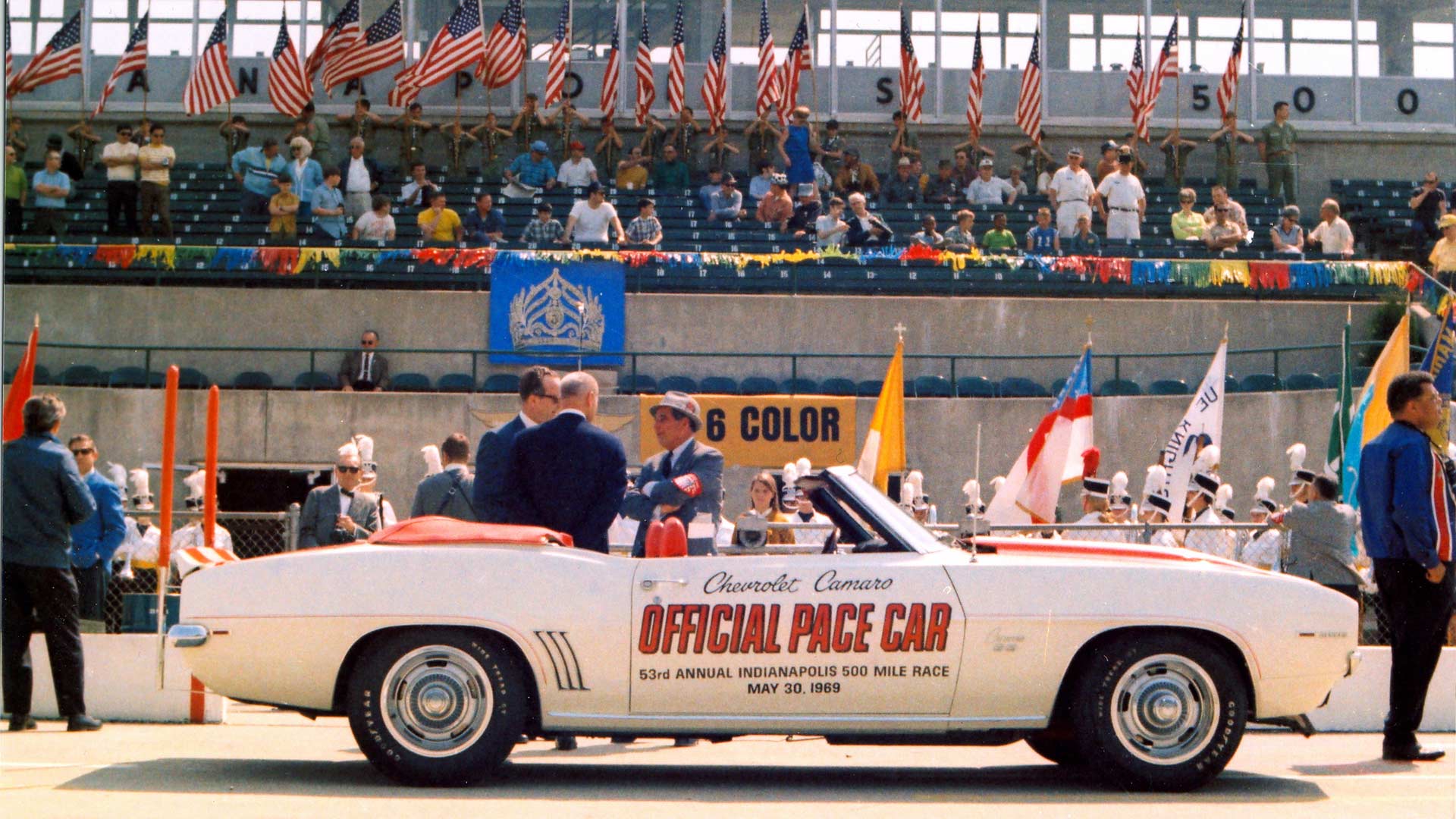
1969 Chevrolet Camaro SS
© ChevroletThe Chevrolet Camaro had served as the Indy 500 pace car in 1967, but we have opted for the later 1969 version for our list. Updated styling for the 1969 model year, being equipped with full RS/SS packages, and Hugger Orange stripes made for an impressive pacer.
Chevrolet would go on to offer a Pace Car Replica package to customers, selling more than 3,600 examples. Unlike the 396-cubic inch V-8 engine powering the actual pace car, most 1969 Camaro replicas feature the 350-cubic inch unit instead.
-
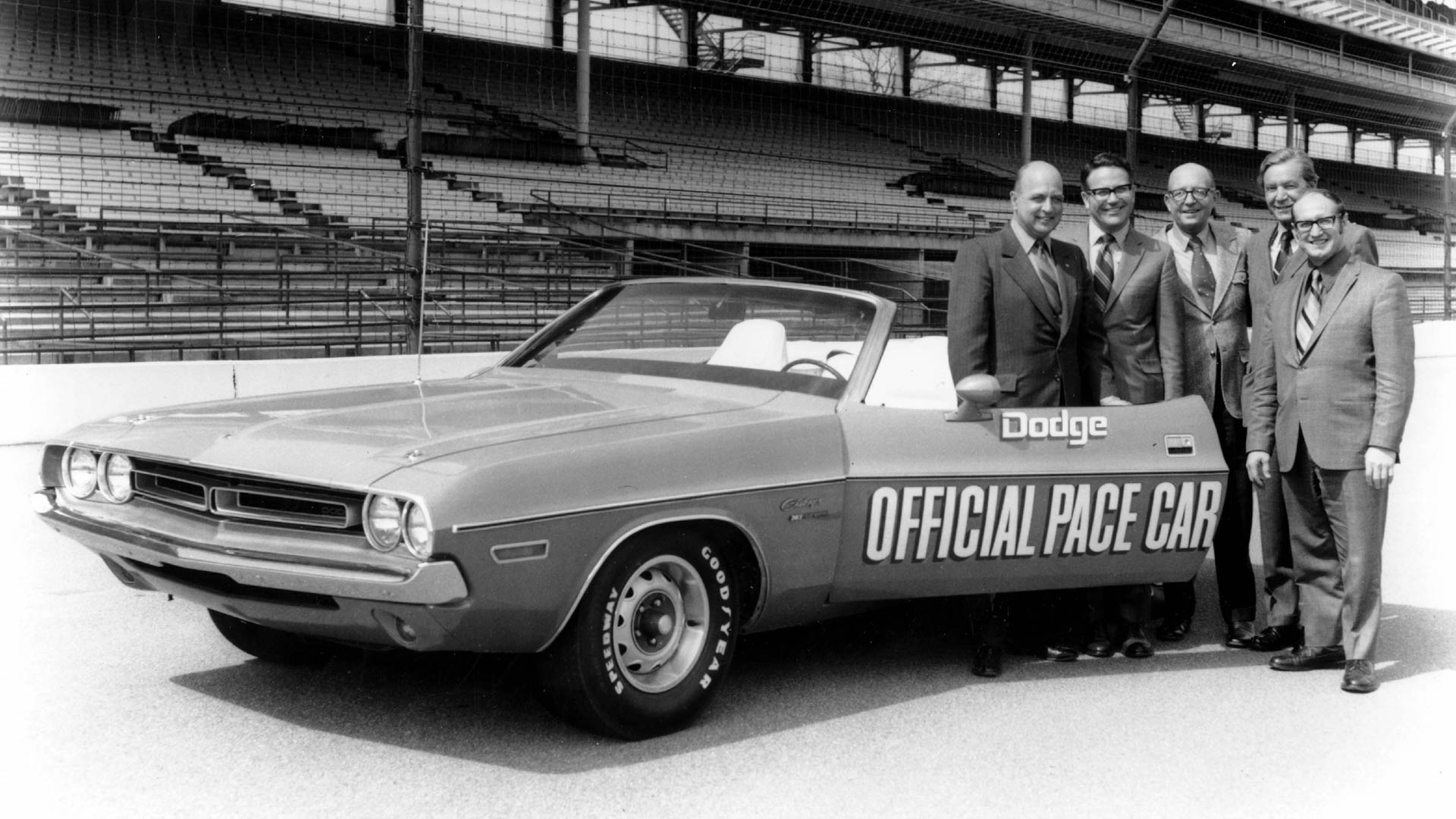
1971 Dodge Challenger
© StellantisWith the muscle car market already beginning to slow, none of the Big Three manufacturers volunteered to supply a pace car for the 1971 Indy 500. Instead, a network of local Dodge dealerships offered to supply the numerous Challengers needed for official duty.
It would be the Challenger pace car, driven by Dodge dealer Edon Palmer, that would cause the biggest drama of the race. Pulling onto pit road after starting the race, the flag Palmer had set to mark his braking point had been removed. As a result, Palmer continued far longer down pit road before realizing he needed to stop.
Even the disc brakes of the Challenger were not enough to stop the car before it crashed into the photographers’ stand. A total of 29 people were injured, with the decision made to ensure that pace car drivers would be experienced professionals in future.
-
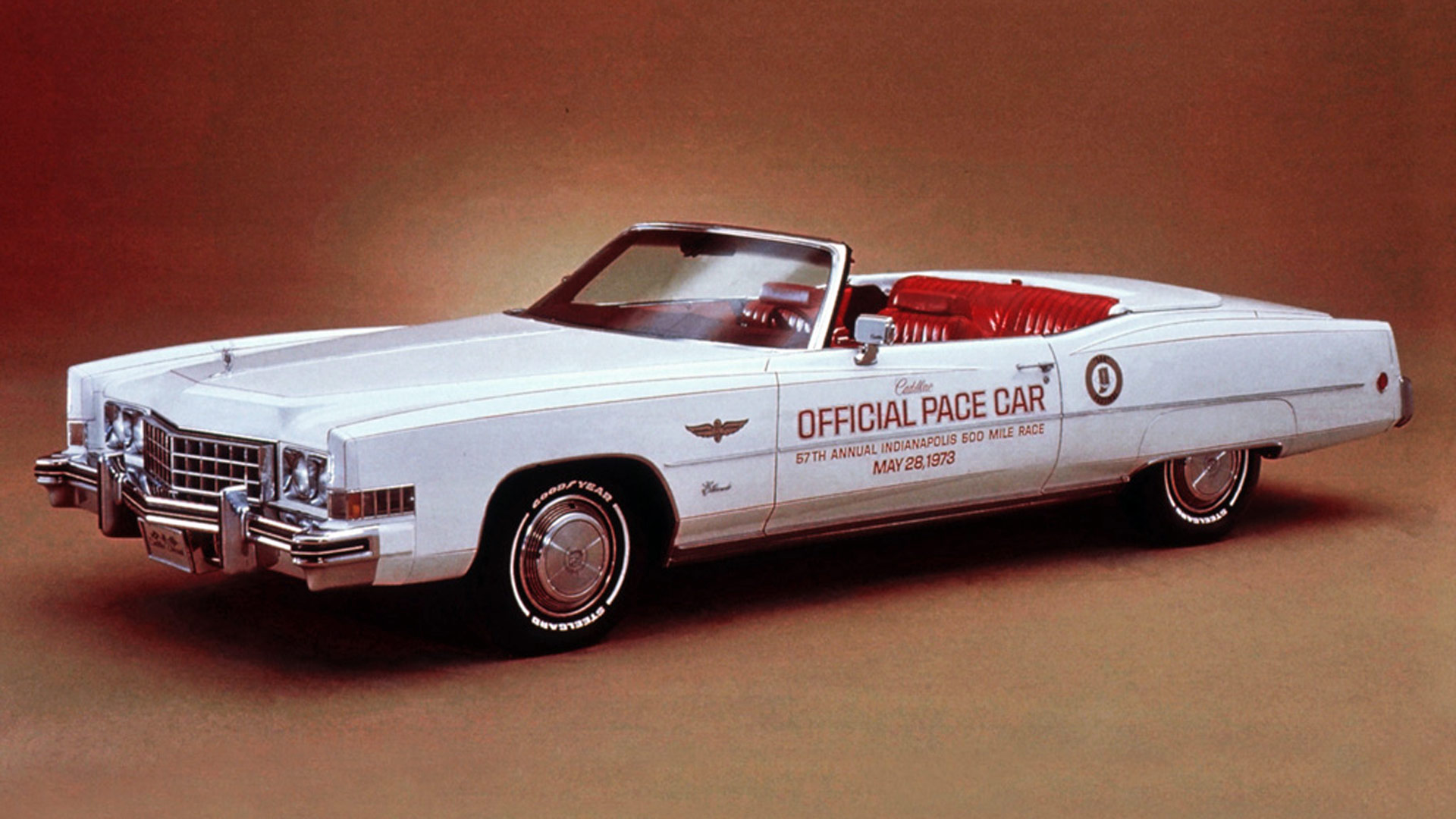
1973 Cadillac Eldorado
© CadillacPushing the boundaries of being the largest post-war pace car, the gigantic Cadillac Eldorado was used for the ill-fated 1973 Indy 500.
Cadillac made more than 560 replicas, but two were specially modified for official duties. The changes for the duo included extracting more power from the 500-cubic inch V-8, and fitting aluminum bumpers to try and save weight.
The race would see driver Swede Savage suffer an accident that would later lead to his death in hospital. A pit crew member was killed after being struck by a fire truck, too.
-
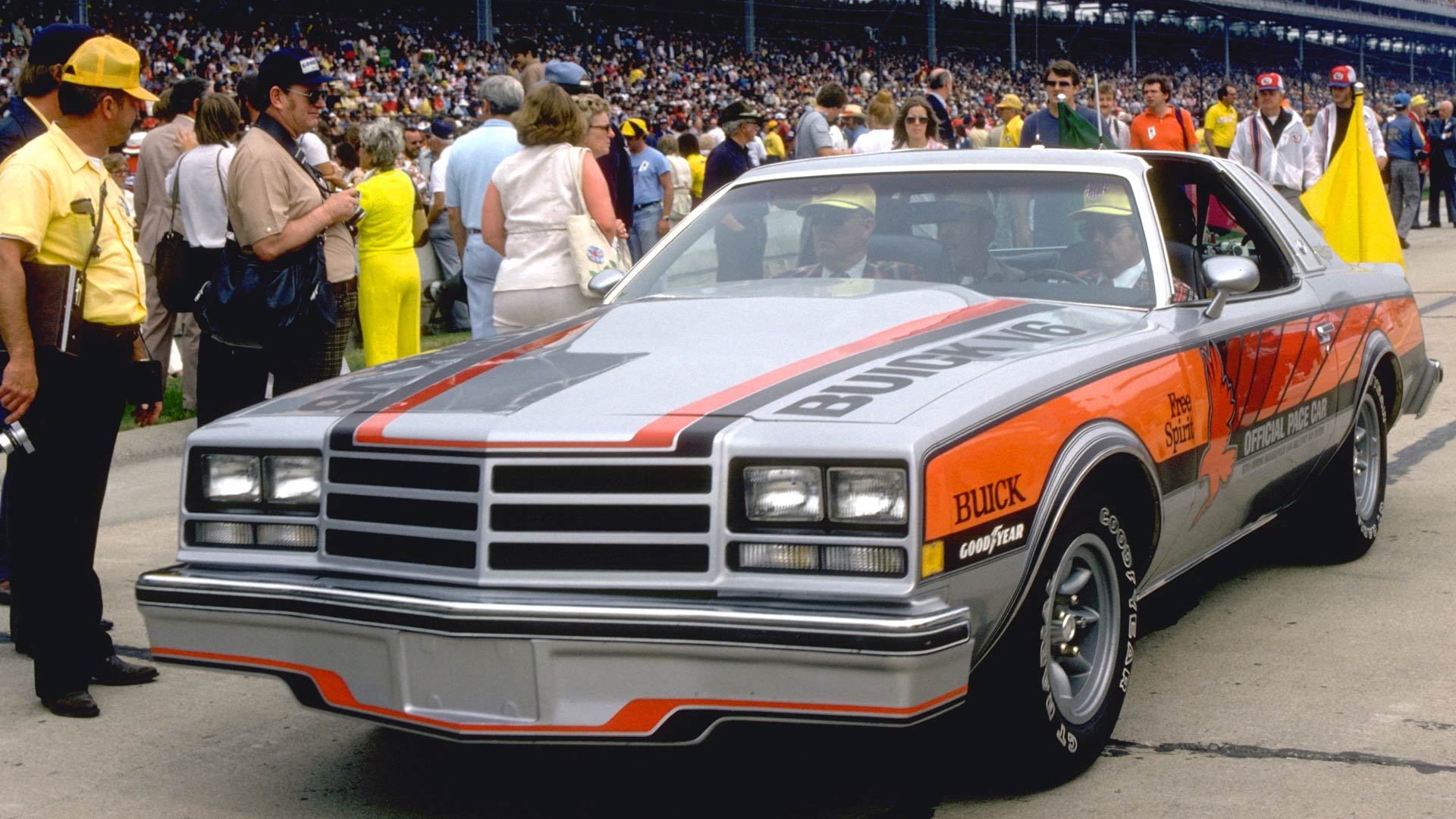
1976 Buick Century V6
© BuickThink cars with downsized forced induction engines are a new phenomenon? Think again. Buick used the 1976 Indianapolis 500 to show off the third-generation Century, with a turbocharged 231-cubic inch V-6.
The pressure to consider more economical engines would force General Motors to create a production version of the turbo motor. Branded as the 3.8-liter RD5, the forced induction engine was launched in 1978, and would feature in a number of GM products.
-
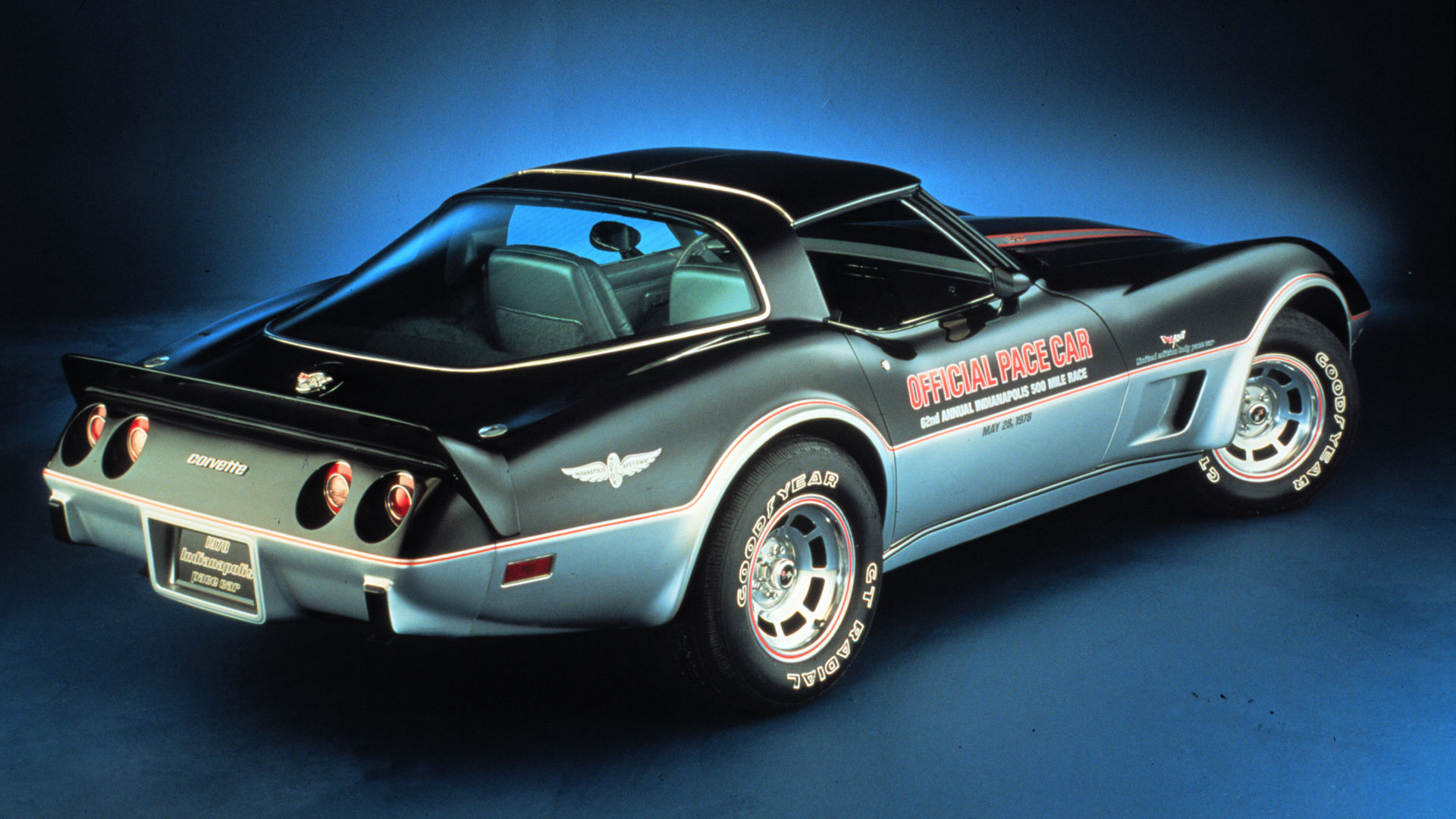
1978 Chevrolet C3 Corvette
© ChevroletChevrolet made what is possibly one of the most recognizable pace cars for 1978. The Indy 500 coincided with the 25th anniversary of the Corvette, with the two being combined together in a celebratory special edition.
A total of 6,502 Limited Edition Indy Pace Car Replica Corvettes were made, allowing one for each Chevrolet dealership. Finished in two-tone black and silver paintwork, interior choices were silver leather or gray cloth.
Buyers could pick between a 8-track tape player or CB radio, and whether to install the special Indy 500 decal set.
-
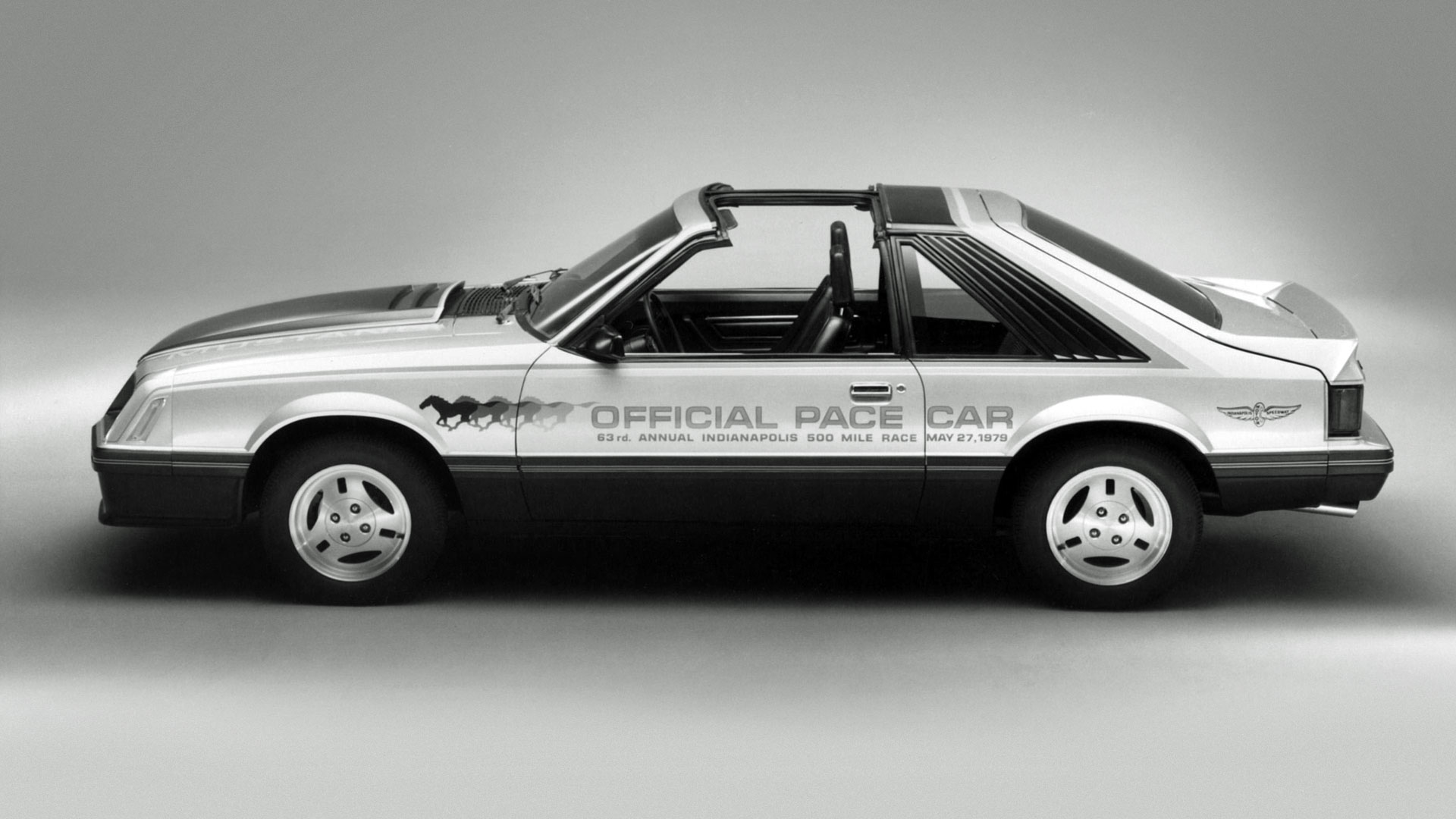
1979 Ford Mustang
© FordThe radical new third-generation Ford Mustang was a prime choice to be the 1979 Indy 500 pace car. Ford went all-in on making a special version of the Mustang for official duties, and recruited a motorsport icon to be behind the wheel.
Three-time Formula 1 World Champion, and two-time Indy 500 competitor, Jackie Stewart would drive the Mustang. For the car itself, Ford painted the pace car in two-tone black and pewter, fitted a new hood, and installed Recaro seats inside.
More than 10,000 replicas would be sold. Buyers were able to pick between the 2.3-liter four-cylinder turbo, or 5.0-liter V-8, versions.
-
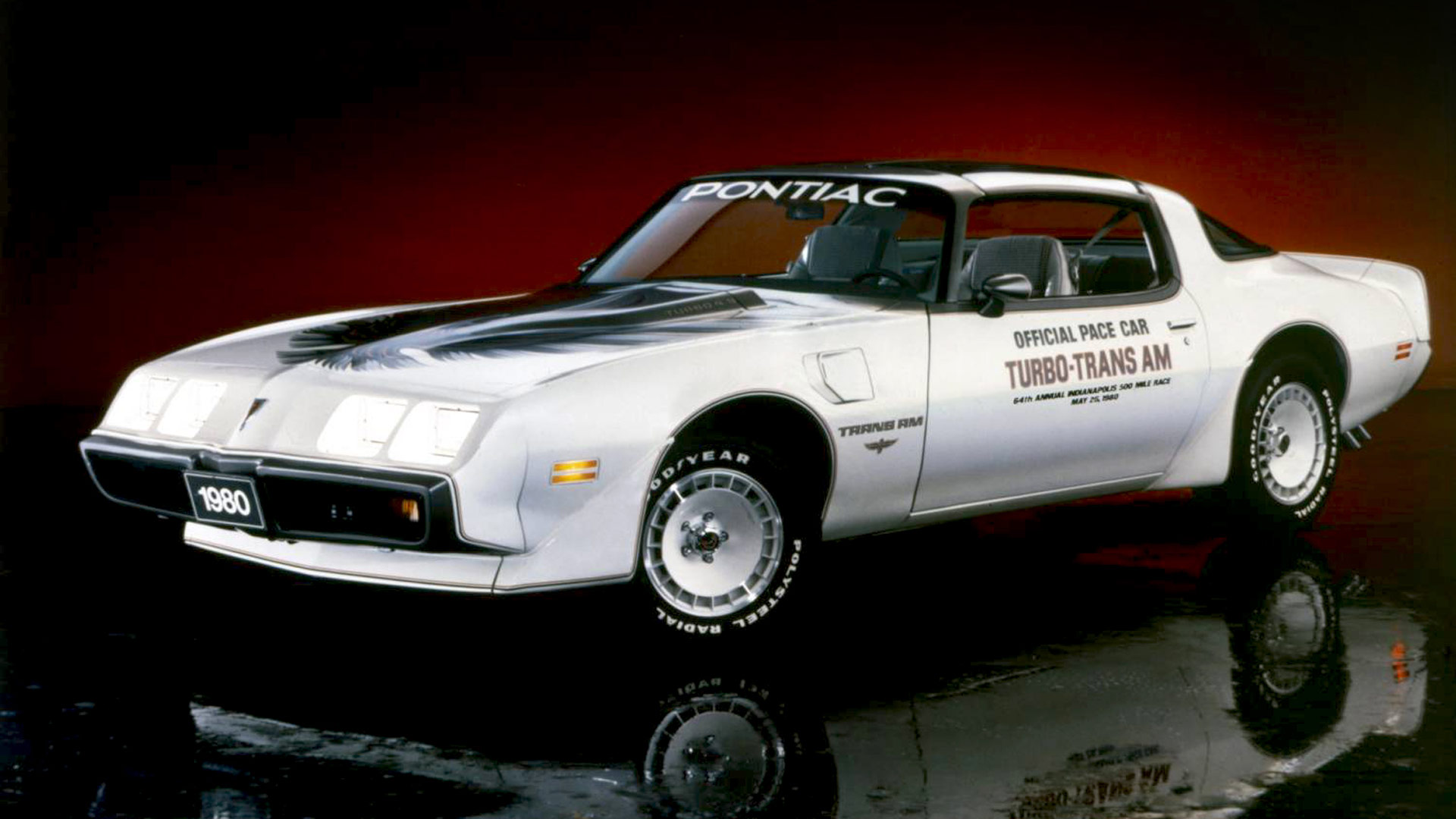
1980 Pontiac Trans Am Turbo
© GMGeneral Motors was still keen to use the Indy 500 as an opportunity to push its turbocharged vision of the future. For the 1980 edition of the epic race, the new Pontiac Turbo Trans Am was called on to lead the field.
Emissions legislation had required Pontiac to dump its biggest engines, and introduce the 4.9-liter turbocharged V-8 as the most powerful option.
It did produce 210 hp and 345 lb-ft of torque, but came with a three-speed automatic transmission as standard.
-
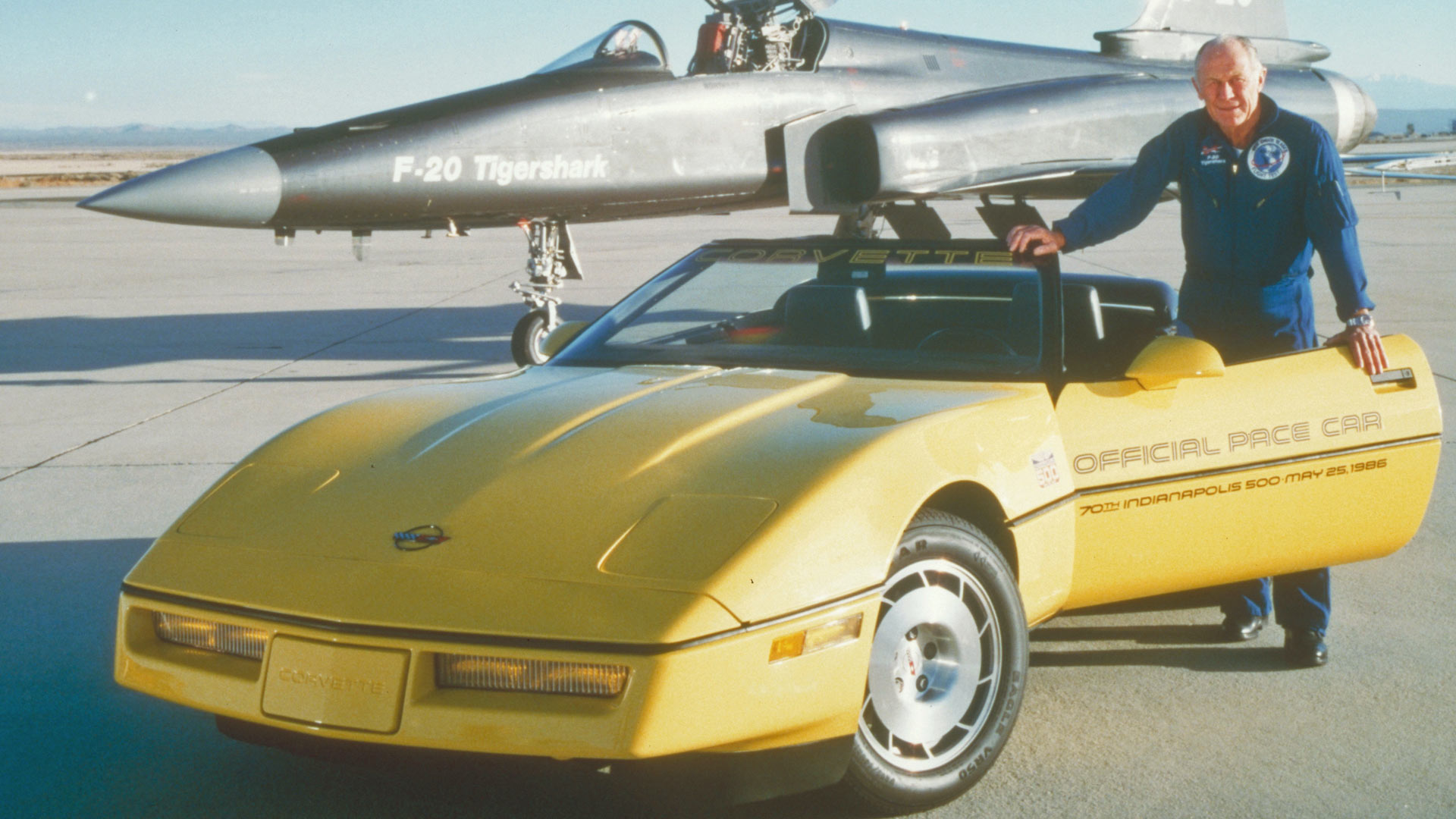
1986 Chevrolet C4 Corvette Convertible
© ChevroletThe return of a convertible version of the Chevrolet Corvette was a good enough reason to select it as the 1986 Indy 500 pace car. Officially absent from the range since 1975, the new convertible model added to the already impressive fourth-generation Corvette.
Driving the pace car would be Chuck Yeager – the test pilot renowned for being the first person to officially break the sound barrier in flight. Yeager would also drive the pace car two years later.
Chevrolet produced a total of 7,315 Indy 500 Pace Car Replica Corvettes, each fitted with a special dashboard plaque.
-
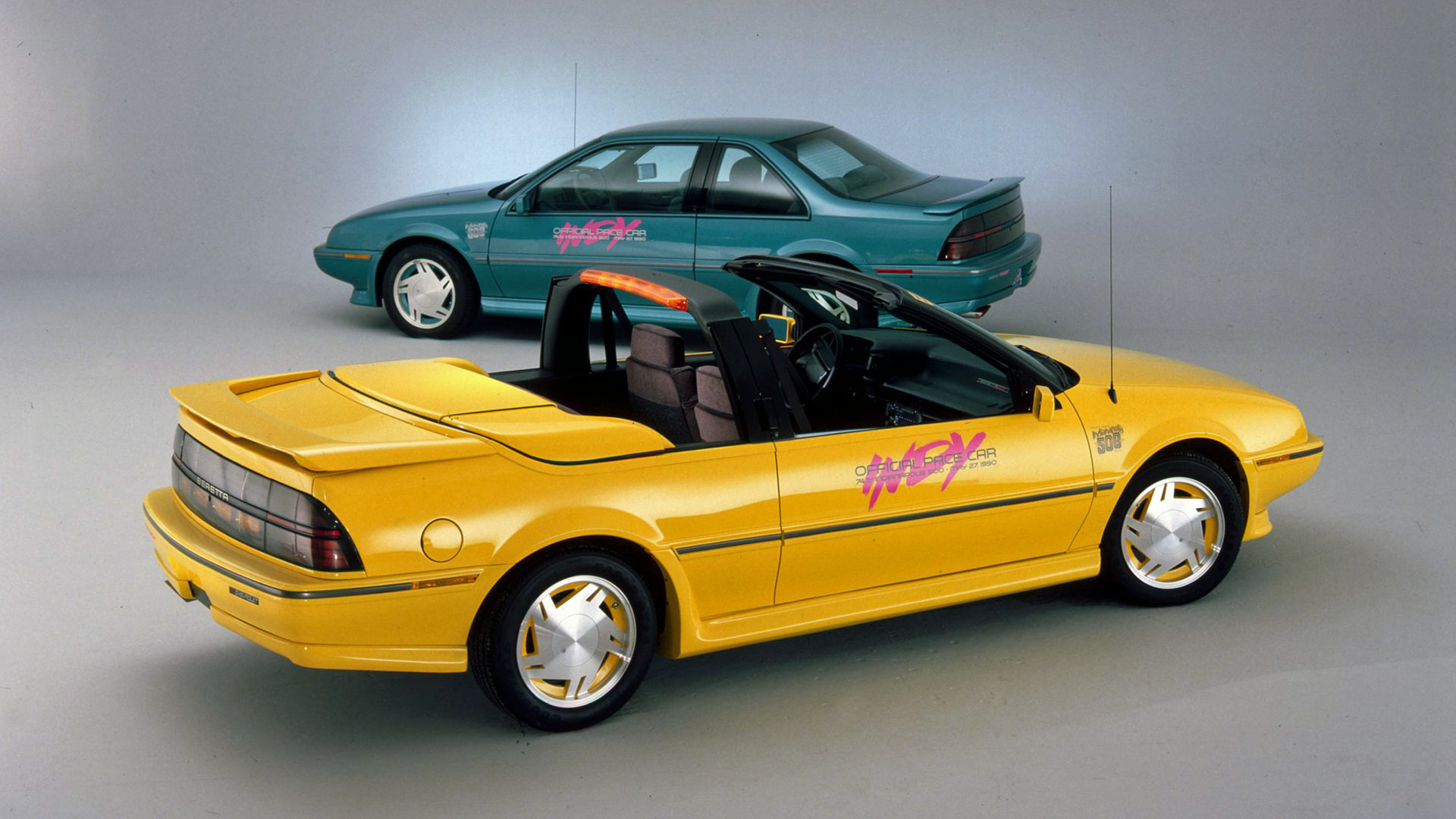
1990 Chevrolet Beretta Convertible
© ChevroletLooking for something that will combine Indy 500 pace car heritage with a RADwood show vibe? Step right this way, and take a seat inside the 1990 Chevrolet Beretta. With graphics that could not be more early 1990s if they tried, the compact Beretta is something of an acquired taste.
Chevrolet went to plenty of effort for the actual Beretta pace car. The 3.1-liter V-6 was enlarged to 3.4-liters, taking output to 225 hp. Ditching the roof to make a convertible version was even more drastic.
Those sufficiently impressed could buy a replica version, but this was only offered in a coupe body style. A total of 1,500 were made in yellow, with a further 3,000 painted green.
-
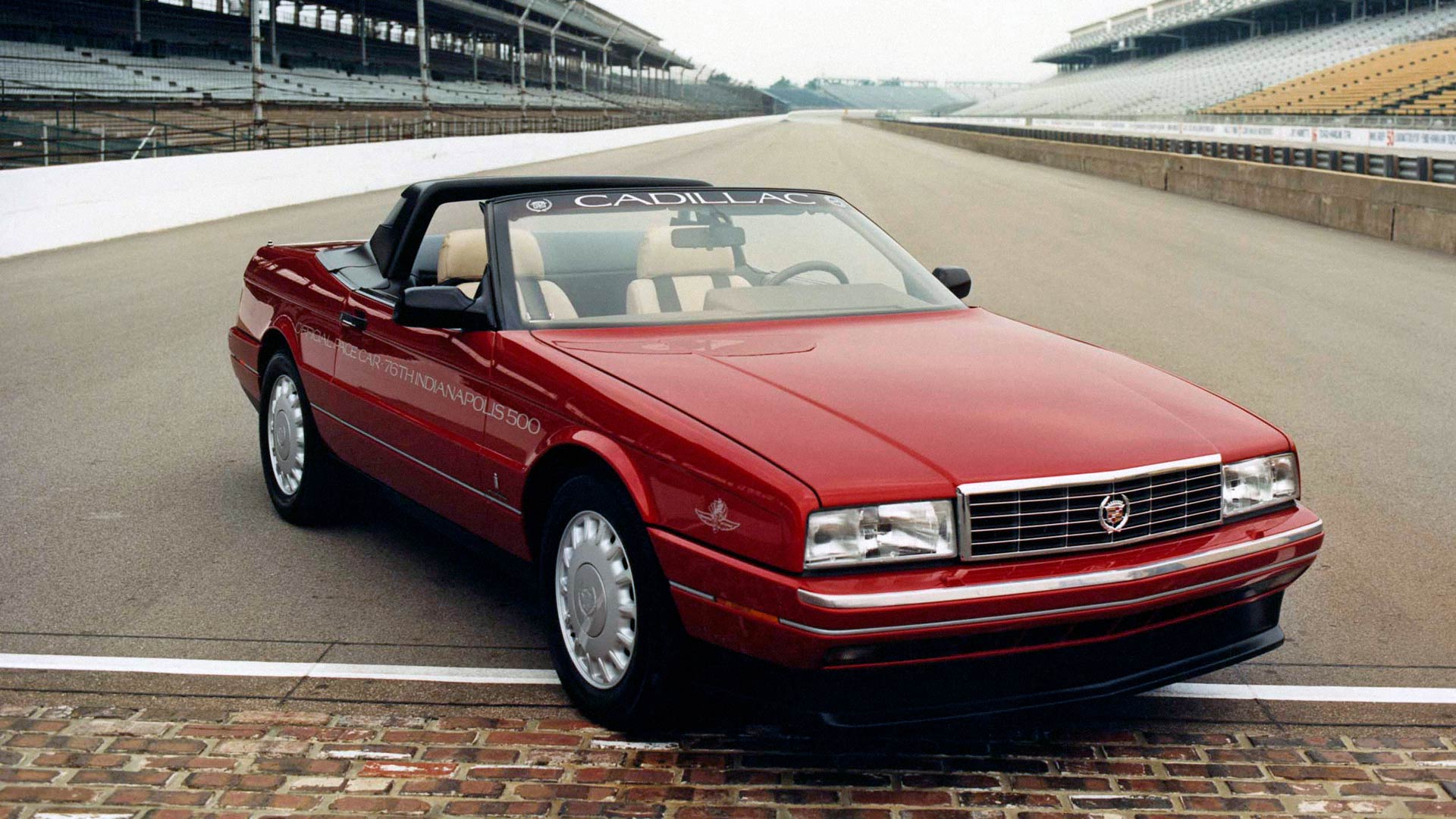
1992 Cadillac Allante
© CadillacEven completing the 500-mile Indy race would be a drop in the ocean for the distance covered to build each Cadillac Allante. The body for each Allante was produced in Turin, Italy, before being flown across the Atlantic to be completed at the Detroit/Hamtramck facility.
The late Bobby Unser was the driver of the Allante pace car, and must have been thrilled to see his nephew, Al Unser Jr., take his first Indy 500 victory.
-
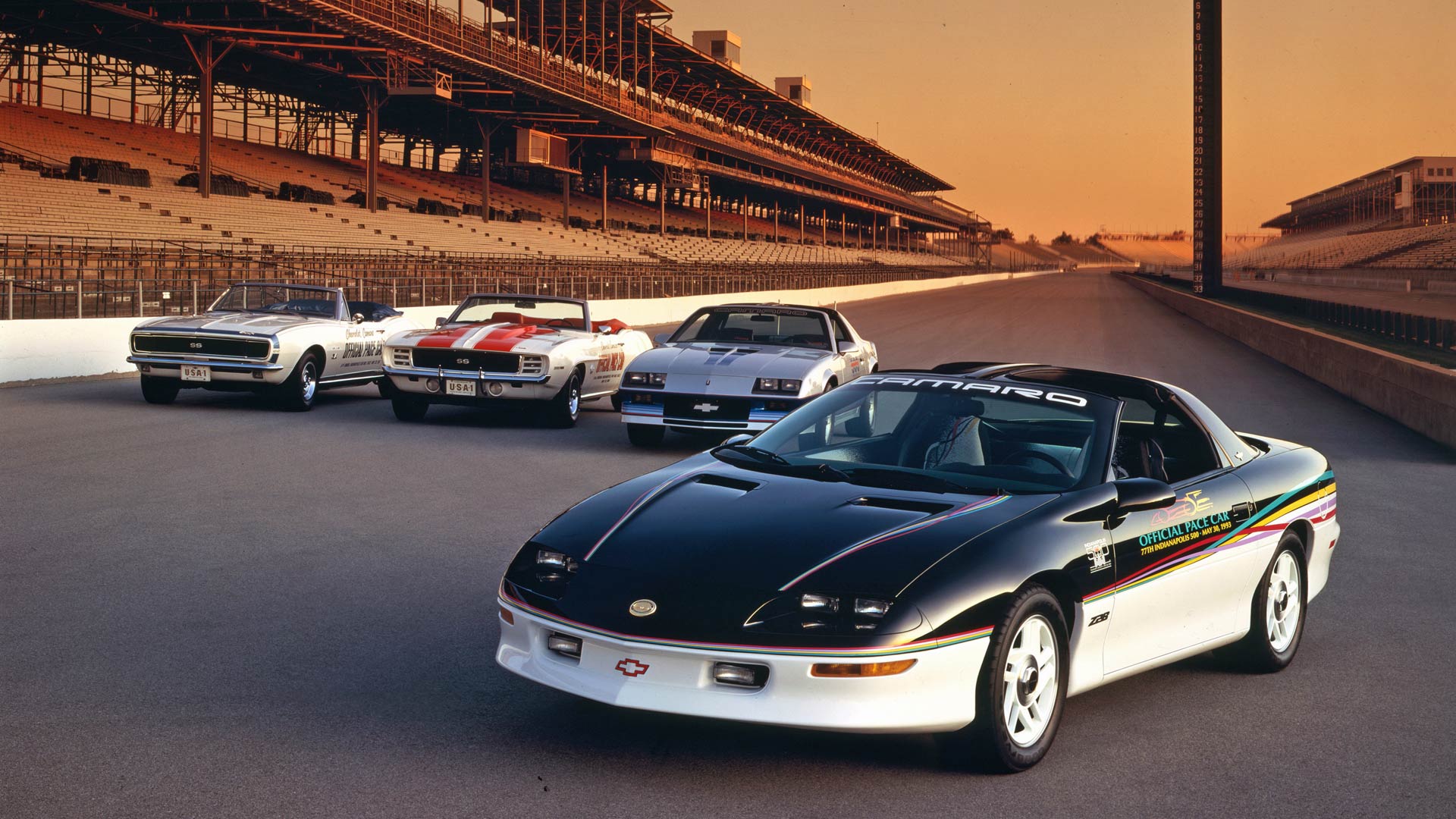
1993 Chevrolet Camaro Z28
© ChevroletGeneral Motors was on a roll with Indy 500 pace cars, with 1993 seeing the Camaro picked to perform official duties for the fourth time. Its selection matched with the debut of an all-new fourth-generation car, and Chevrolet wasted no effort in making it stand out.
Along with the actual pace car, driven by Jim Perkins, Chervolet made 645 replica versions. A two-tone black and white color scheme was matched with some (typically 1990s) bodywork graphics. The color scheme continued inside, too.
Being based upon the Z28 model meant a 5.7-liter V-8 was under the hood, delivering 275 hp and 325 lb-ft of torque.
-
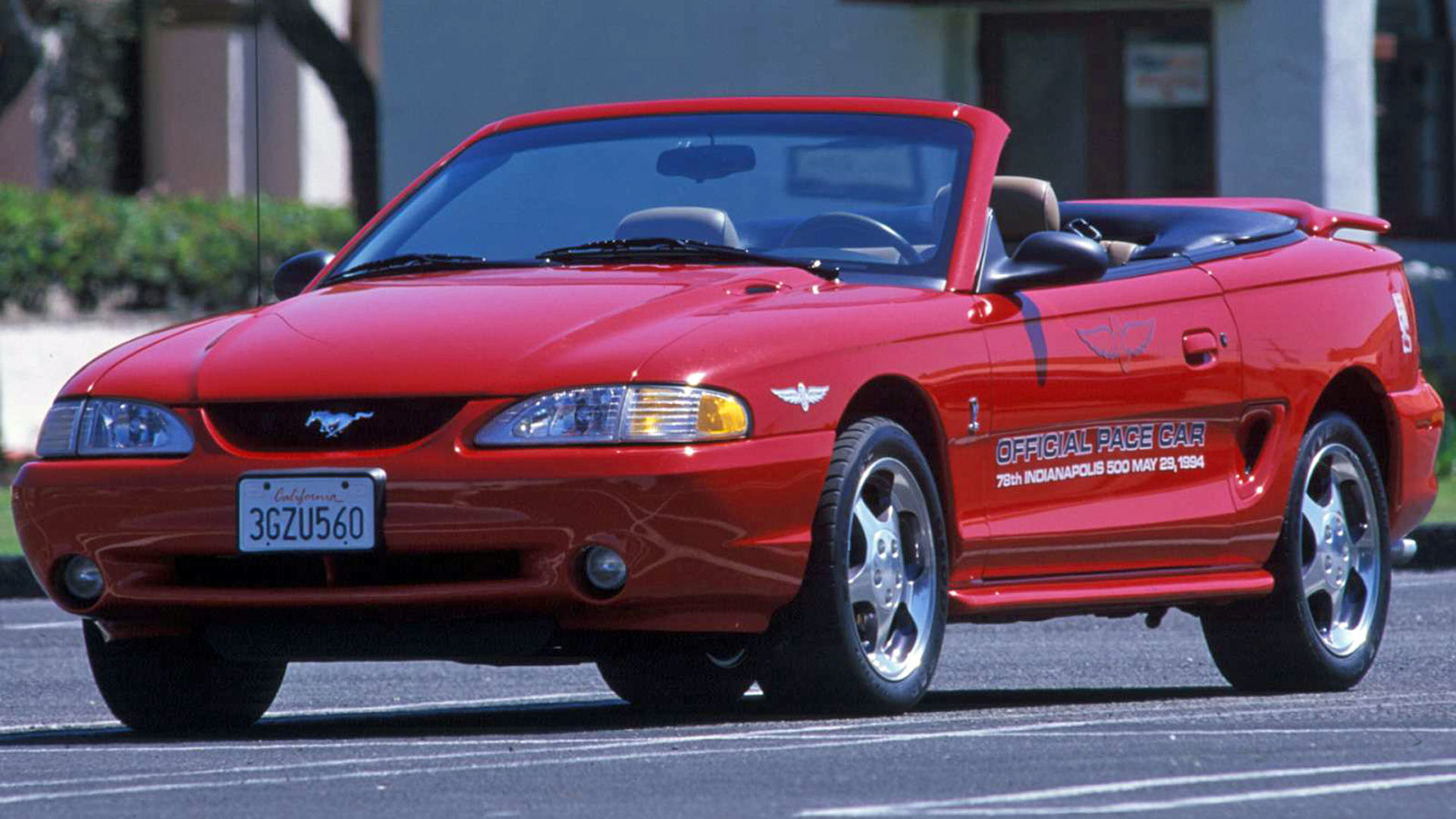
1994 Ford SVT Mustang Cobra
© FordTo coincide with the Ford Mustang’s 30th anniversary, a new SVT Cobra model was selected to be the 1994 Indy 500 pace car. The actual pace cars used for the event, including the car driven by Parnelli Jones, were specially modified by Roush Performance.
Ford also released 1,000 Indy 500 Pace Car Replicas, which were all painted in Rio Red. Special embroidery for the Saddle Brown interior, and a set of exterior decals, were supplied with each car. The 5.0-liter V-8 was the star attraction, with 240 hp and 285 lb-ft of torque.
-
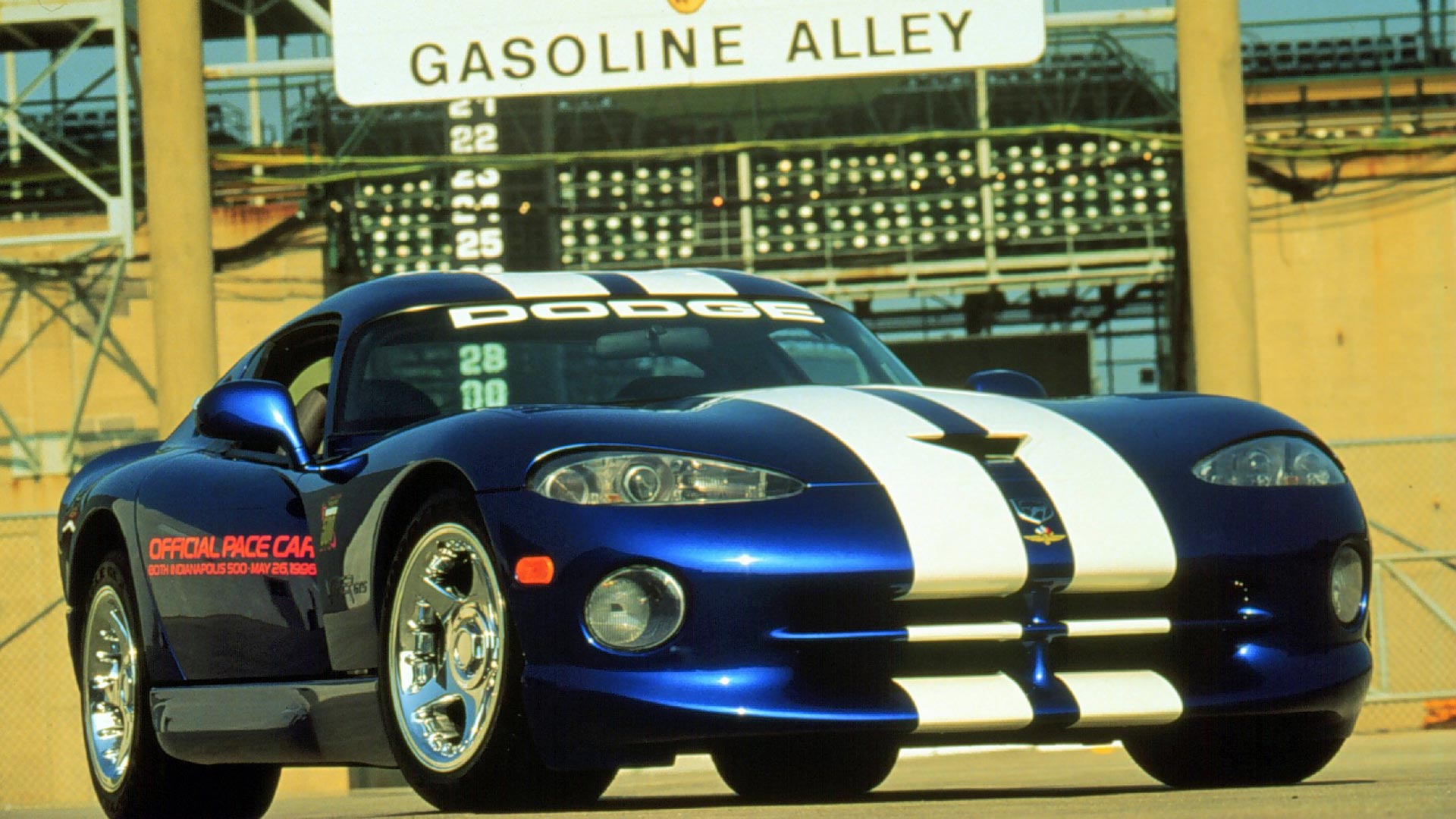
1996 Dodge Viper GTS
© StellantisYes, a Dodge Viper RT/10 was used as the 1991 Indy 500 pace car, driven by Carroll Shelby. But, that car was technically a prototype, and the Viper GTS used in 1996 is, to our eyes, even prettier than the roadster.
Launched as part of the second-generation updates for the Viper, the GTS saw power from the 8.0-liter V-10 swell to 450 hp. The double-bubble roof would also make wearing a race helmet inside easier, too.
Driving the pace car for 1996 was Bob Lutz, the president and chief operating officer of Chrysler. Although there were no replicas made, Indy 500 winner Buddy Lazier did get to take a Viper home.
-
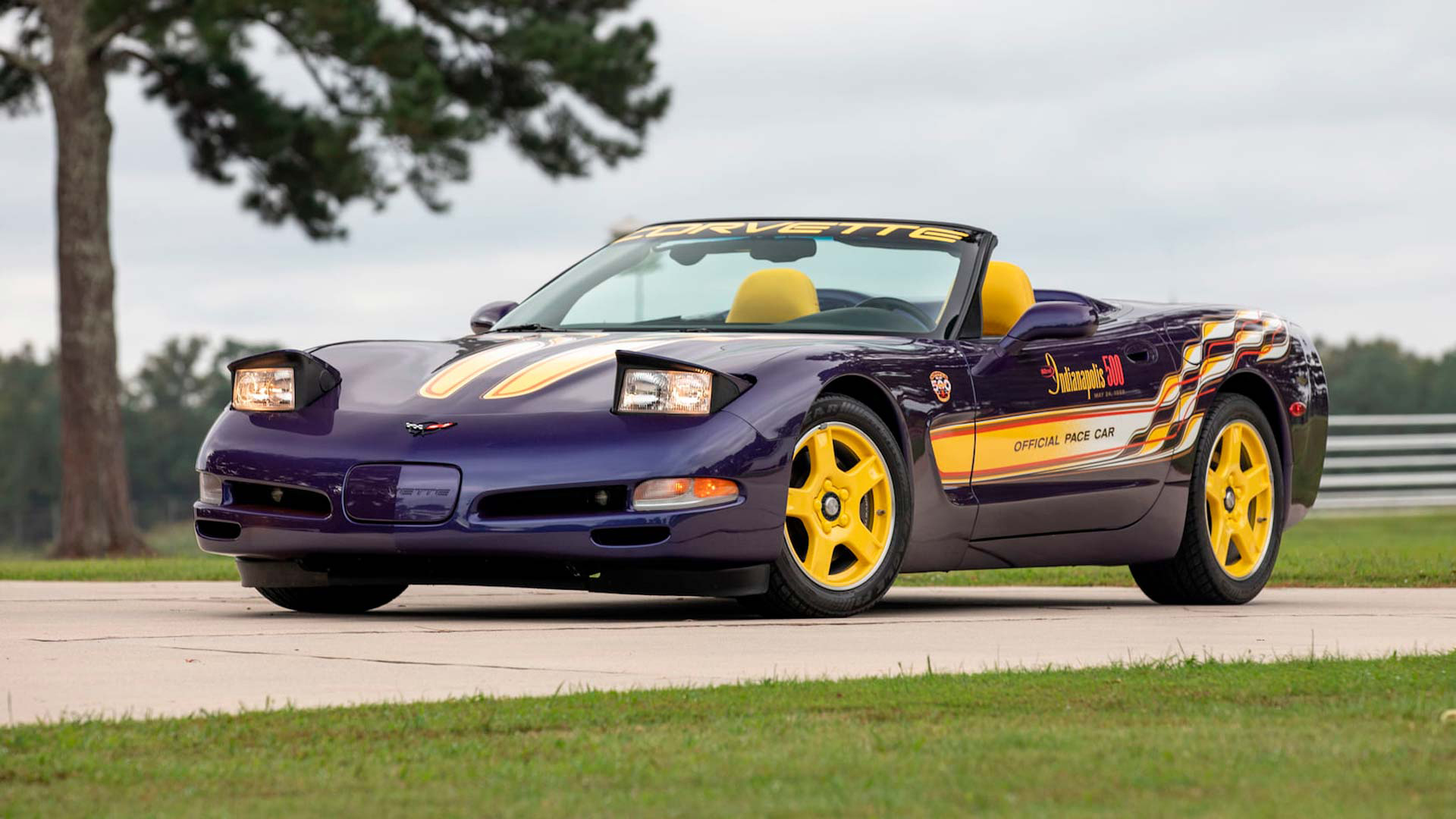
1998 Chevrolet C5 Corvette
© Mecum AuctionsWhen it comes to the most eye-catching color scheme used for an Indy 500 pace car, Chevrolet’s 1998 effort is surely a winner. Celebrating the launch of an all-new C5 Corvette, the pace car model mixed Radar Blue paintwork with elaborate yellow detailing throughout.
The Pace Car Replica package maintained the same paint color and livery, along with the yellow leather seats. It also added the new Active Handling System, Bose sound system, and climate control.
Australian golfer Greg Norman was scheduled to drive the pace car, but was forced to withdraw due to a shoulder injury. Parnelli Jones was drafted in as a replacement.
-
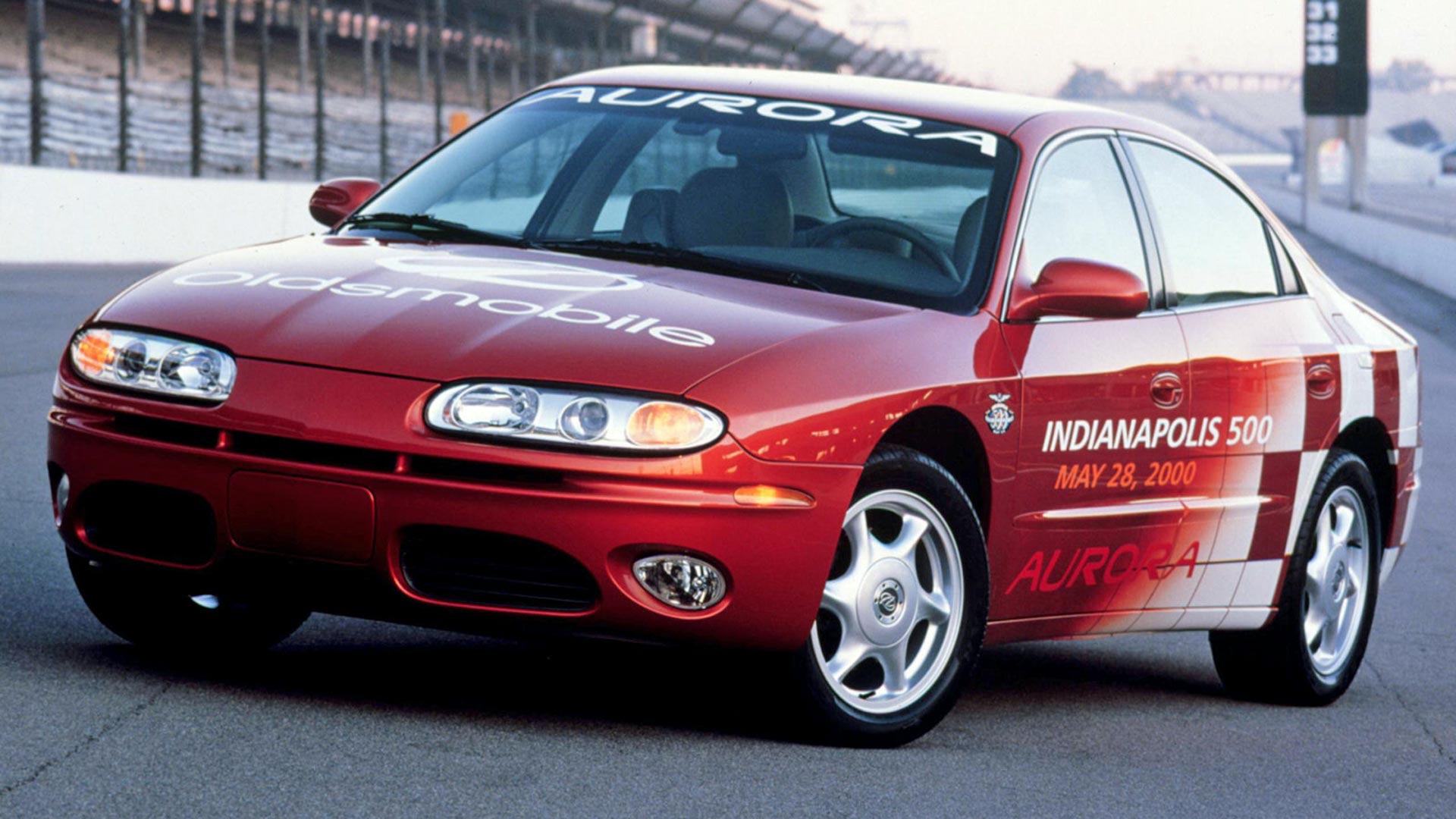
2000 Oldsmobile Aurora
© GMOldsmobile had emerged as the engine of choice to power Indy 500, and Indy Racing League, winners in the late 1990s. It therefore made sense that Oldsmobile would want to capitalize on this by supplying the official pace car for the 2000 Indy 500.
The first generation Aurora had performed the role for the 1997 race. But, with a new Aurora set to be launched for the 2001 model year, it got the job in 2000.
On track the action was far more exciting than the Aurora. Juan Pablo Montoya, the reigning champion in the rival CART series, took a dominant race victory over the Indy Racing League regulars.
-
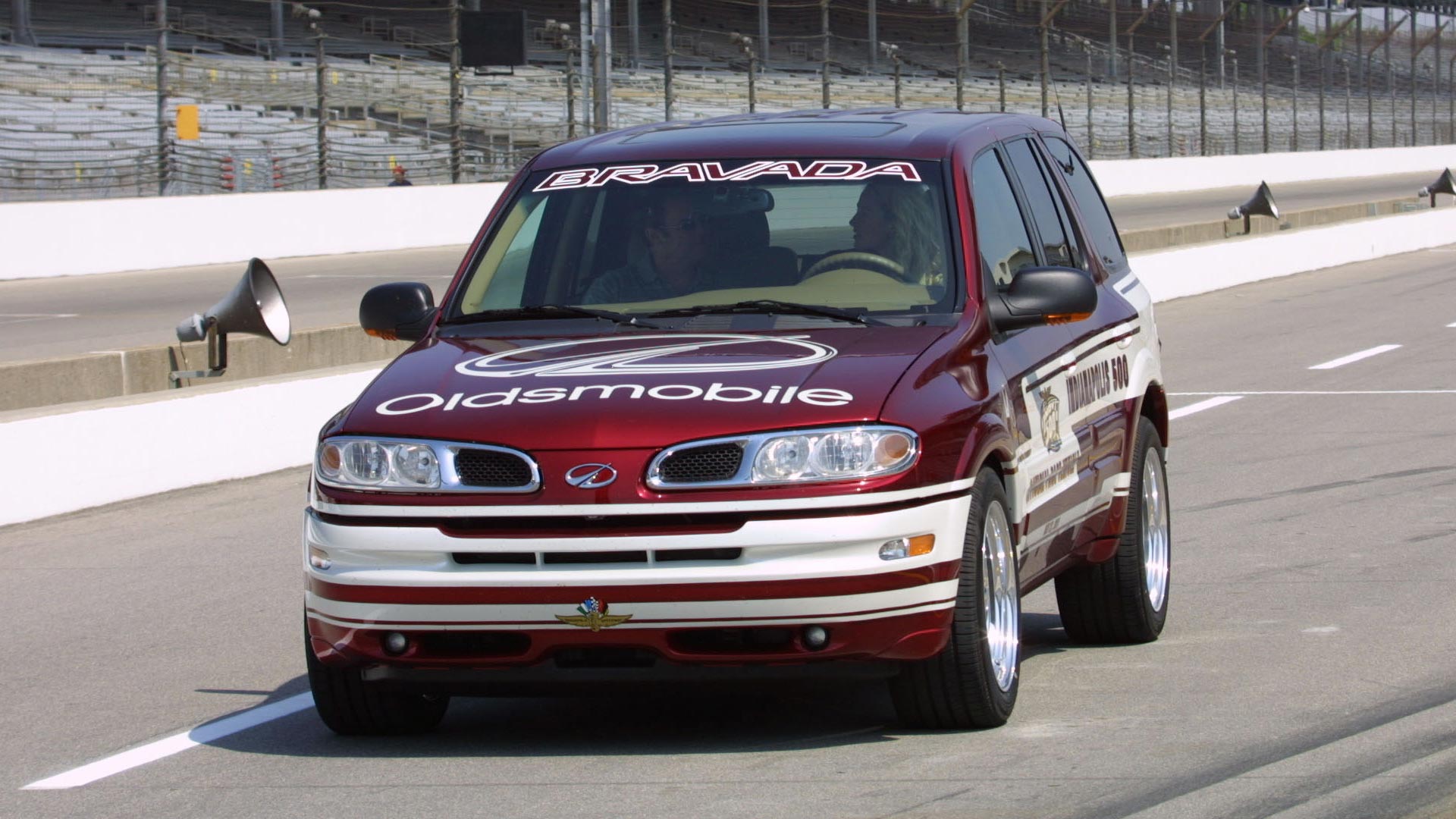
2001 Oldsmobile Bravada
© GMIf the Oldsmobile Aurora was uninspiring as a pace car, the Oldsmobile Bravada SUV holds the record for being the most reviled vehicle to lead the Indy 500 field.
Remarkable for being the final ‘new’ Oldsmobile to ever be launched, the third-generation Bravada first appeared in early 2001. It was noted as being fitted with an inline-six engine, and being offered with a rear-wheel drive layout.
We should perhaps be happy that the Buick Rainier, the successor to the Bravada, did not get picked by GM to be used as an Indy 500 pace SUV.
-
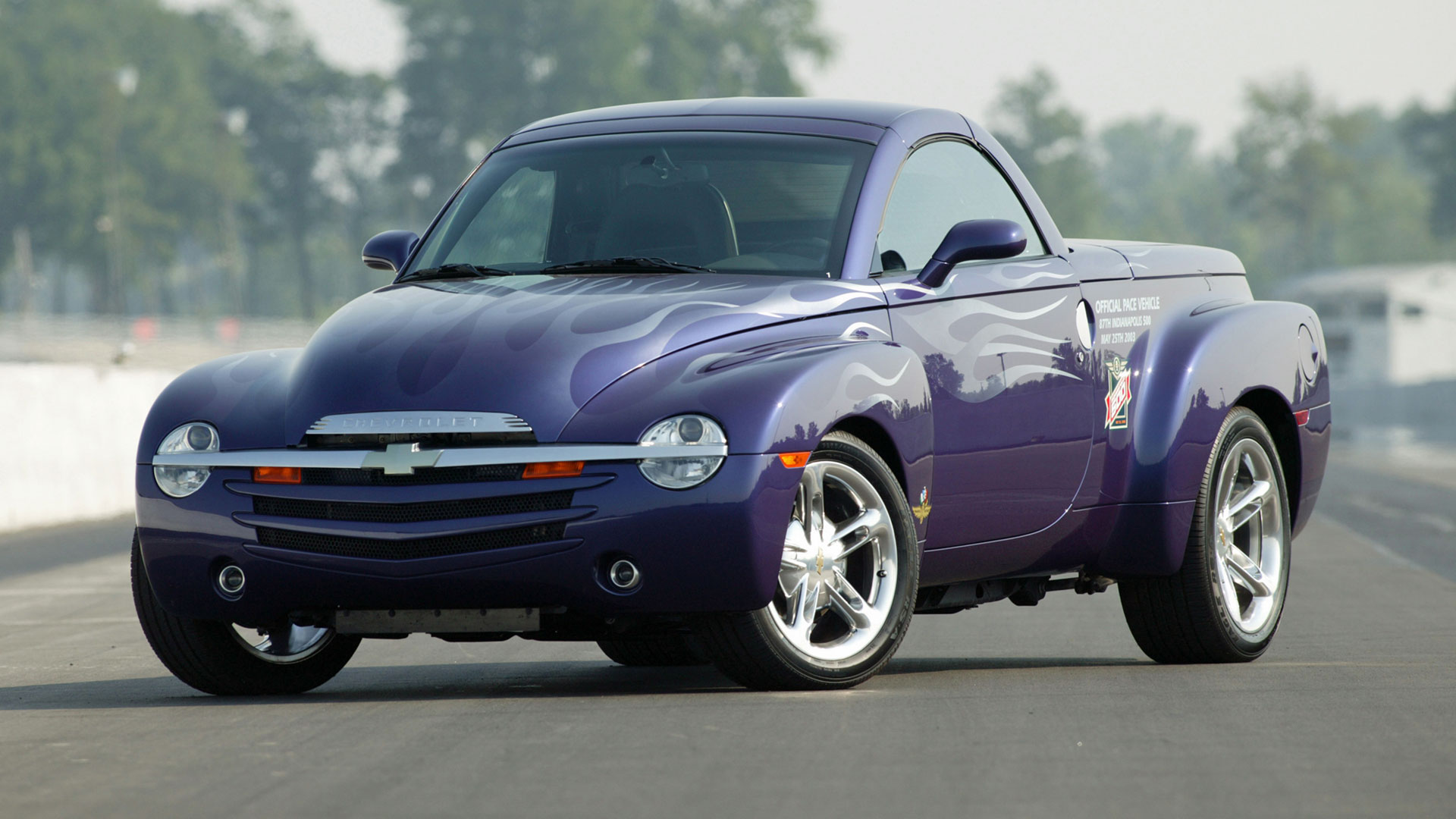
2003 Chevrolet SSR
© ChevroletThe legacy of the Bravada did live on at the 2003 Indy 500 though. Underneath the bizarre retro roadster pickup body of the Chevy SSR was the same GMT360 platform as used in the Oldsmobile SUV.
Inspired by Chevrolet’s Advance Design pickup trucks of the 1940s and ‘50s, the SSR did at least pack plenty of power. The standard 5.3-liter V-8 delivered 300 hp, whilst the later 6.0-liter LS2 versions had 400 hp.
Despite appearing as the pace truck, Chevrolet suffered with slow sales. This led to production shutdowns, and the eventual discontinuation of the SSR in 2006.
-
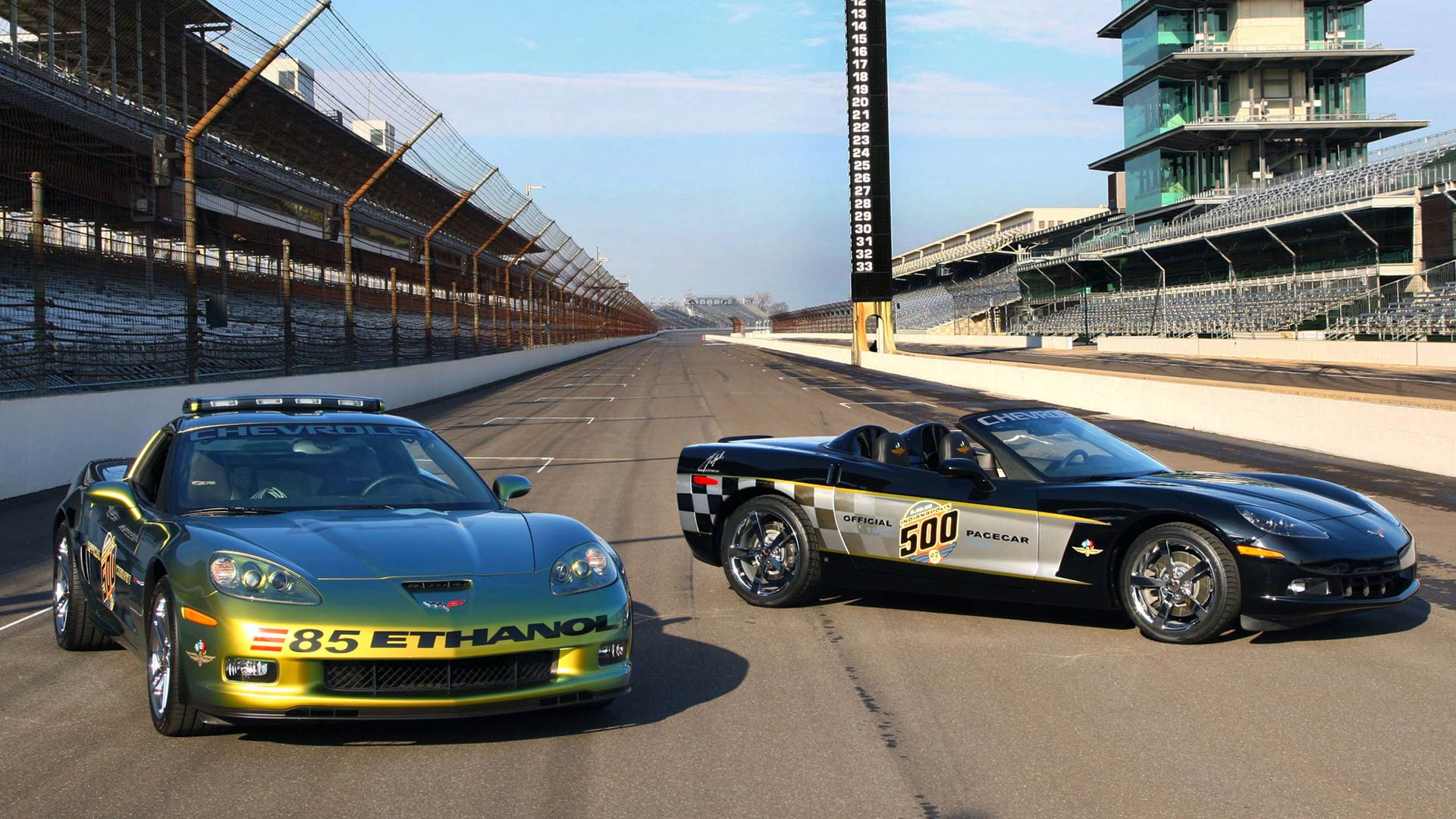
2008 Chevrolet C6 Corvette Z06
© ChevroletFollowing the SSR of 2003, Chevrolet used the Indy 500 pace car slot to demonstrate a constant stream of Corvettes. The 2008 edition of the race marked the 19th time a Corvette had been used for official duties, and also the first Indy 500 since the ‘reunification’ of the Indy Racing League and Champ Car series.
Chevrolet supplied two pace cars, with the one finished in Gold Rush Green flip paint being a special concept model. Based upon the production Corvette Z06, it was modified to run on E85 ethanol fuel.
Two-time Indy 500 winner Emmerson Fittipaldi was given the task of leading the pack to start the race.
-
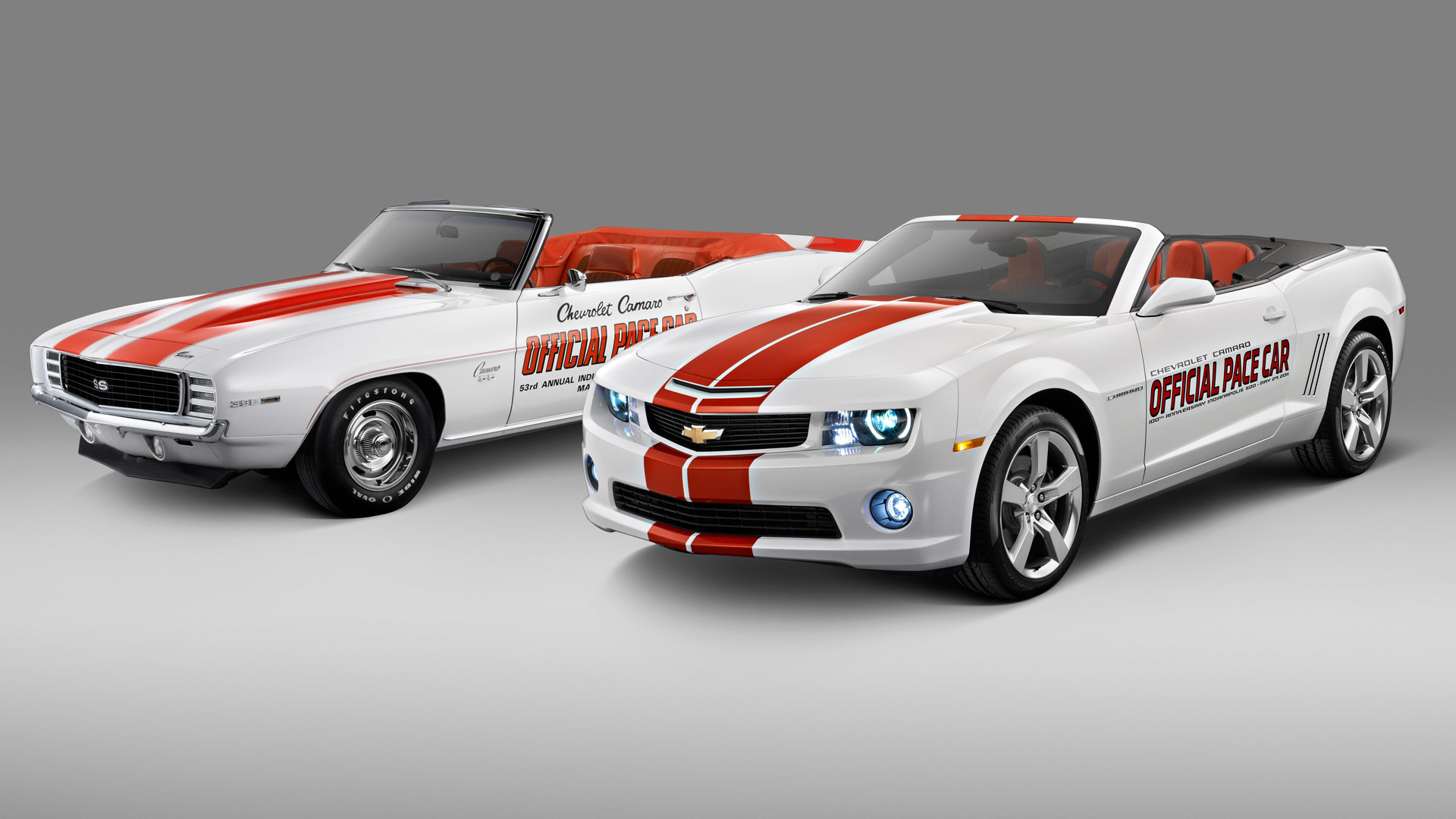
2011 Chevrolet Camaro SS Convertible
© ChevroletChevrolet took the Camaro on a three-year run as the Indy 500 pace car, culminating in the 2011 edition. A Summit White exterior, matched with orange exterior stripes, graphics, and interior was a homage to the 1969 Camaro.
The fifty Camaros produced for Indy 500 duties were all equipped with a 400 hp V-8, combined with a six-speed automatic transmission. Donald Trump was initially named as the driver, but withdrew following a social media campaign.
A later Barrett-Jackson auction saw fans able to bid on the first of the Indy 500 Festival Committee cars. Proceeds from the sale of the Camaro were donated to the David Foster Foundation.
-
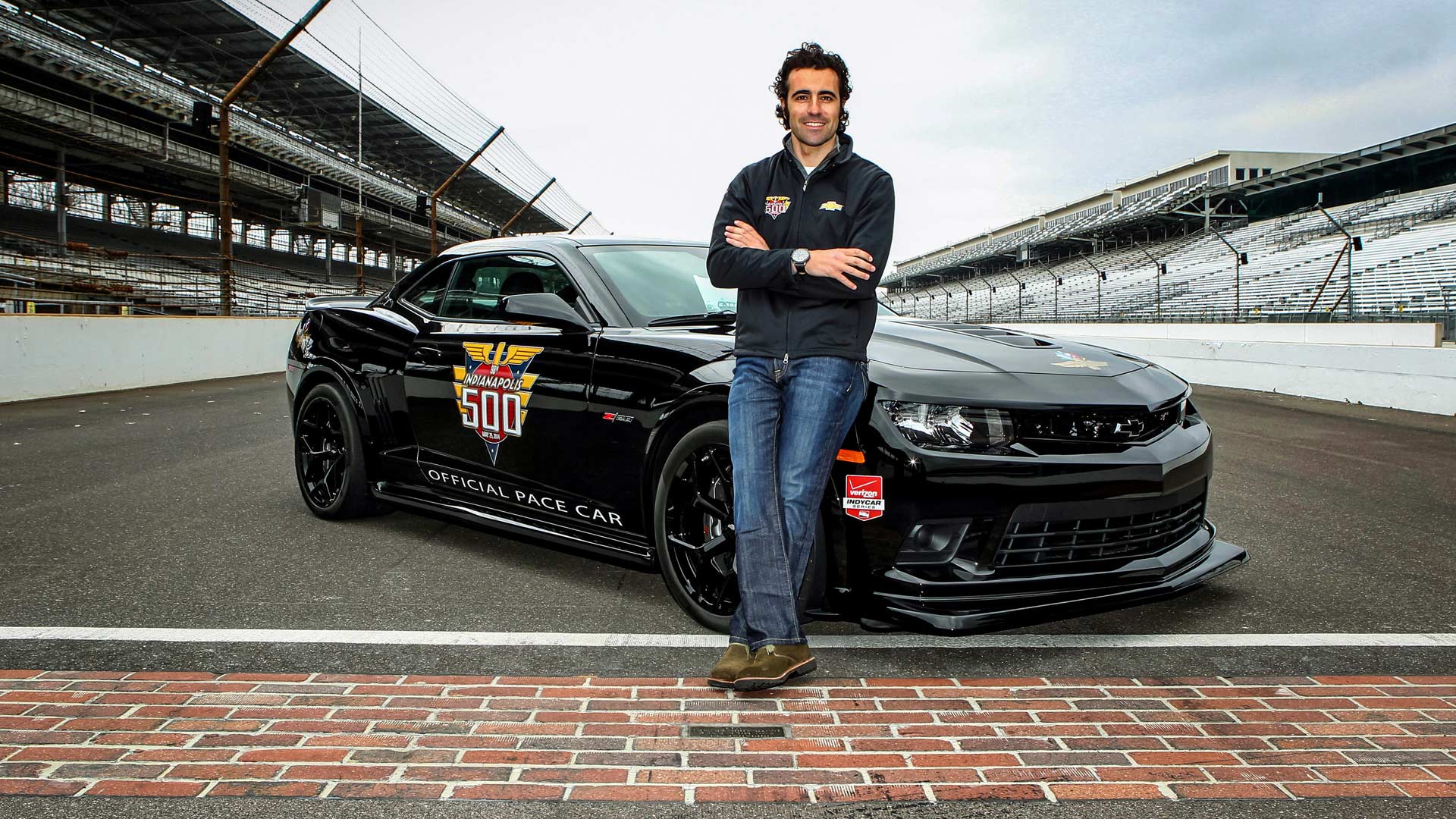
2014 Chevrolet Camaro Z28
© ChevroletAn updated fifth-generation Camaro naturally meant an opportunity for Chevrolet to add even more to its record of supplying the Indy 500 pace car. First shown at the 2013 New York Auto Show, the 2014 Indy 500 was a new chance for fans to see the car on the move.
Returning the Z28 name meant endowing the Camaro with a 7.0-liter V-8, developing 500 hp and 470 lb-ft of torque. A six-speed Tremec manual transmission was standard, as were carbon ceramic brakes.
Three-time Indy 500 winner, and four-time IndyCar Series Champion, Dario Franchitti was picked to wrangle the new Camaro around the Brickyard.
-
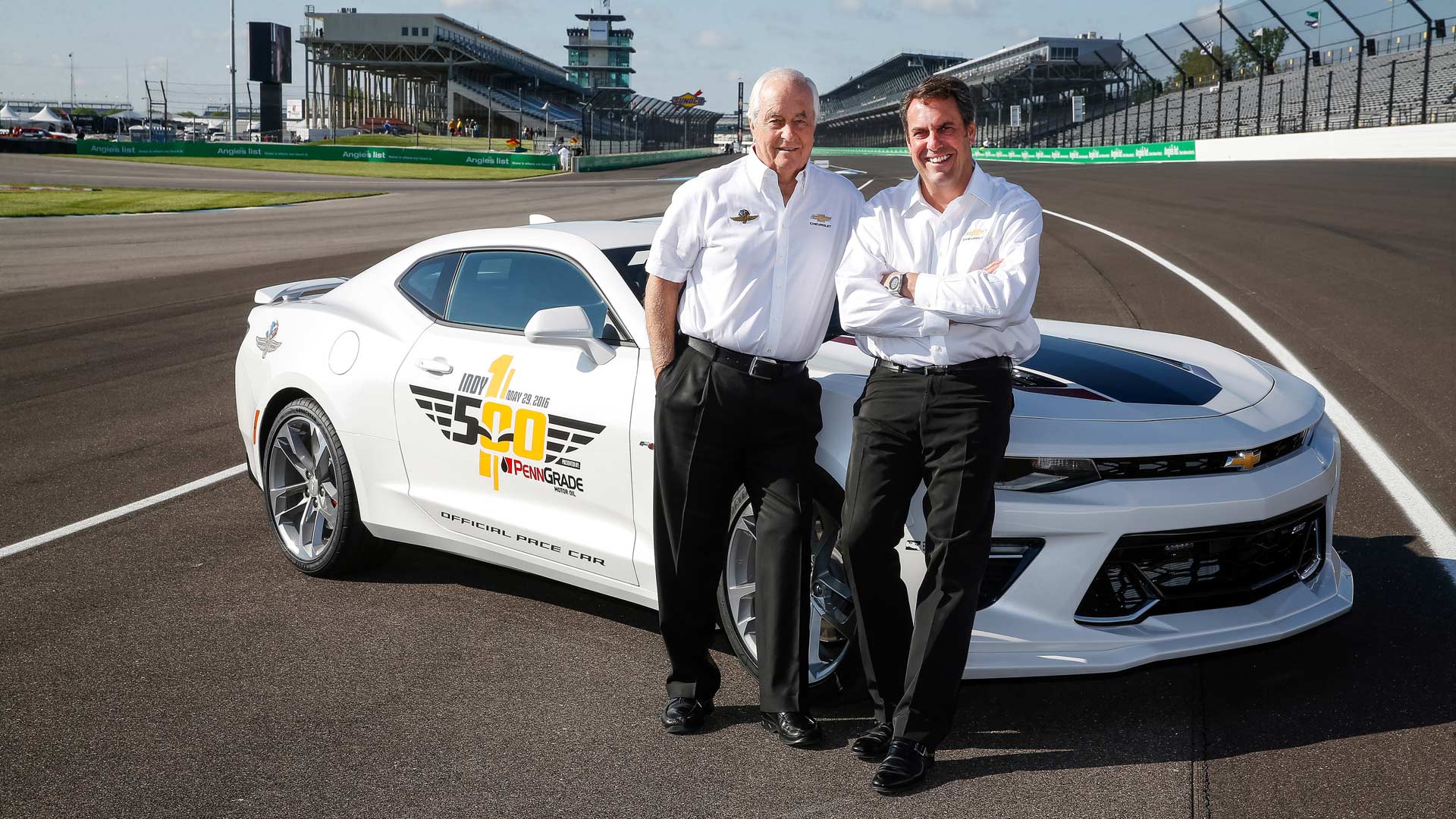
2016 Chevrolet Camaro SS Anniversary Edition
© ChevroletBeing selected to lead the field in the 100th running of the Indy 500 made the choice of pace car for the 2016 race something of a big deal. The Chevy Camaro stepped up to the plate for the ninth time, showing off the all-new sixth-generation muscle car.
Chevrolet was also celebrating the 50th anniversary of the Camaro being launched, adding to the festivities. In a further twist of fate, this coincided with Roger Penske hitting 50 years of being an IndyCar team owner.
It all combined to see Mr. Penske, now the owner of the Indianapolis Motor Speedway, responsible for pacing the start of the 2016 race.
-
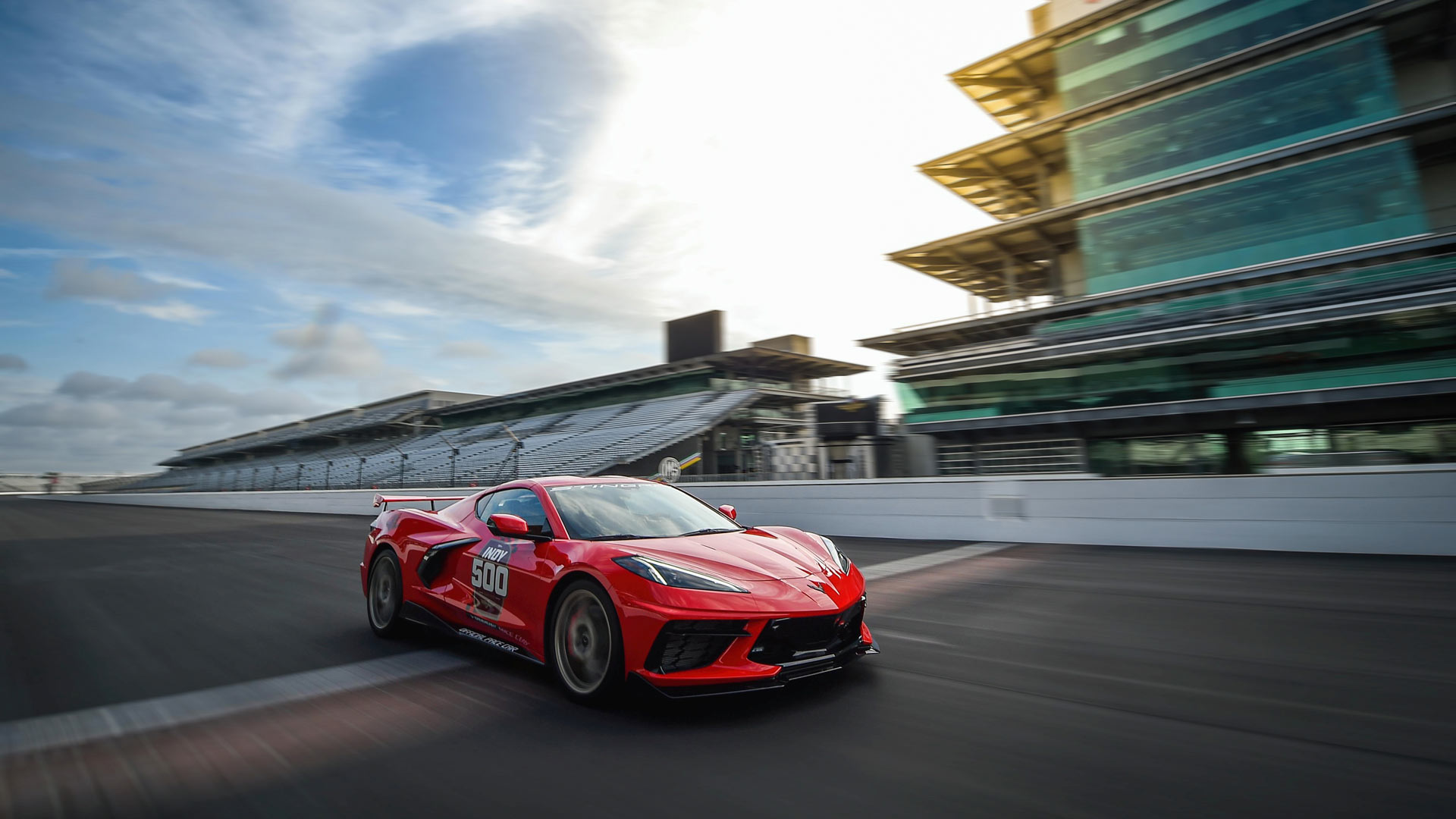
2020 Chevrolet C8 Corvette Stingray
© ChevroletCoronavirus forced the 2020 Indy 500 to break with tradition, marking the first time the historic event had been held outside the month of May. Some things, thankfully, remained the same, with a Chevrolet chosen to act as the official pace car.
The radical mid-engined C8 Corvette Stingray became the 31st Chevrolet to lead the pack, with General Motors President Mark Reuss at the wheel on race day.
Finished in Torch Red, the Corvette Stingray was equipped with the Z51 Performance Package, an optional ground effects kit, and a special Indy 500 livery.
-
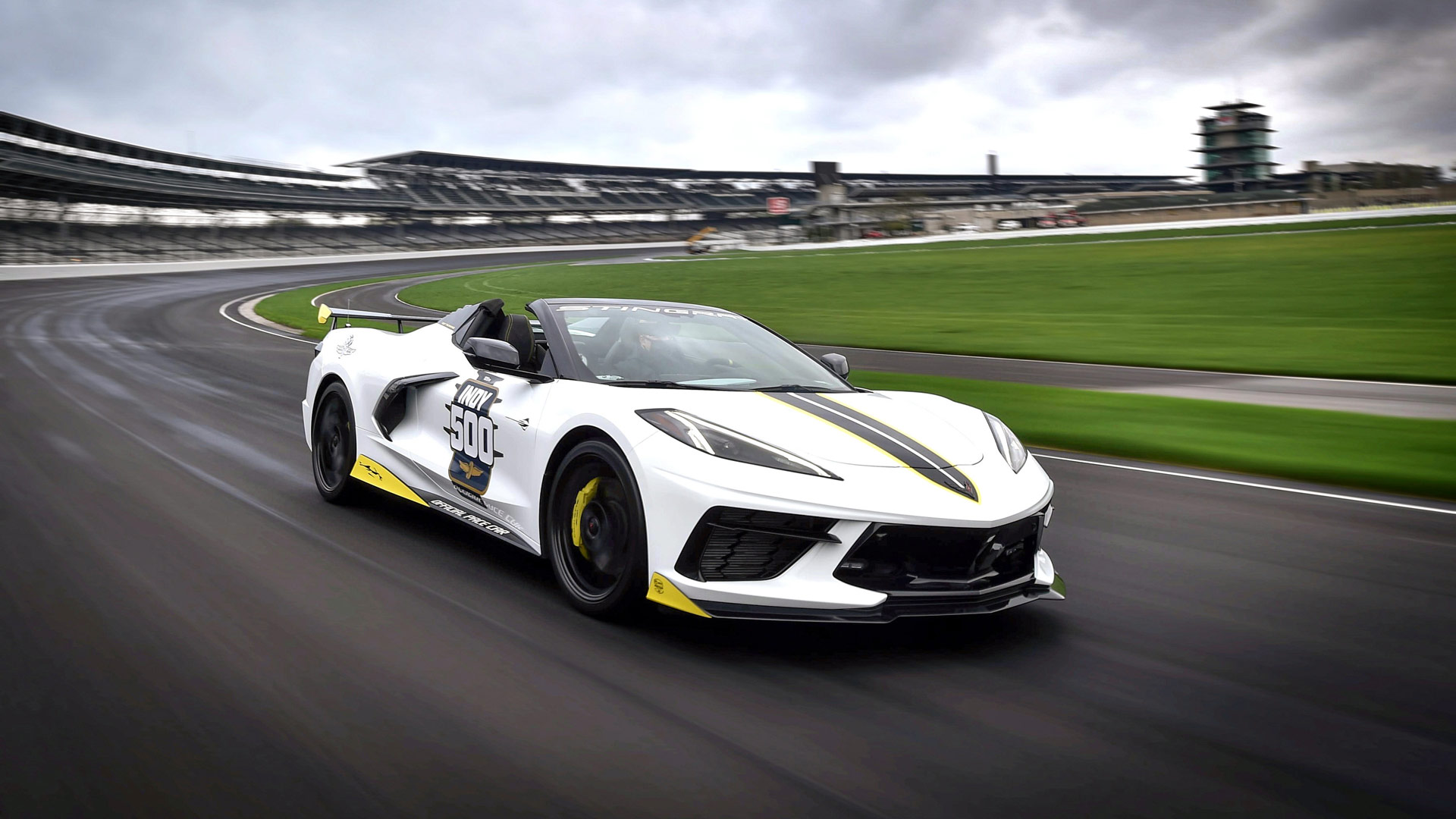
2021 Chevrolet C8 Corvette Convertible
© ChevroletTo take Chevrolet’s Indy 500 pace car tally to an impressive 32nd appearance, the 2021 race will see a C8 Corvette Convertible out in front. With a folding hardtop roof, the new Corvette Convertible is perhaps even more suited to pace car duties.
Driving the Corvette will be Danica Patrick, who holds the record for the best finish in the Indy 500 by a female driver. Her third place in 2009 is even more pertinent this year, with the female-owned Paretta Autosports team having qualified for the 2021 race.
Along with leading the field in the Corvette, Patrick will be pulling double duty to act as a studio analyst for NBC’s broadcast coverage on Sunday, 30 May.
-
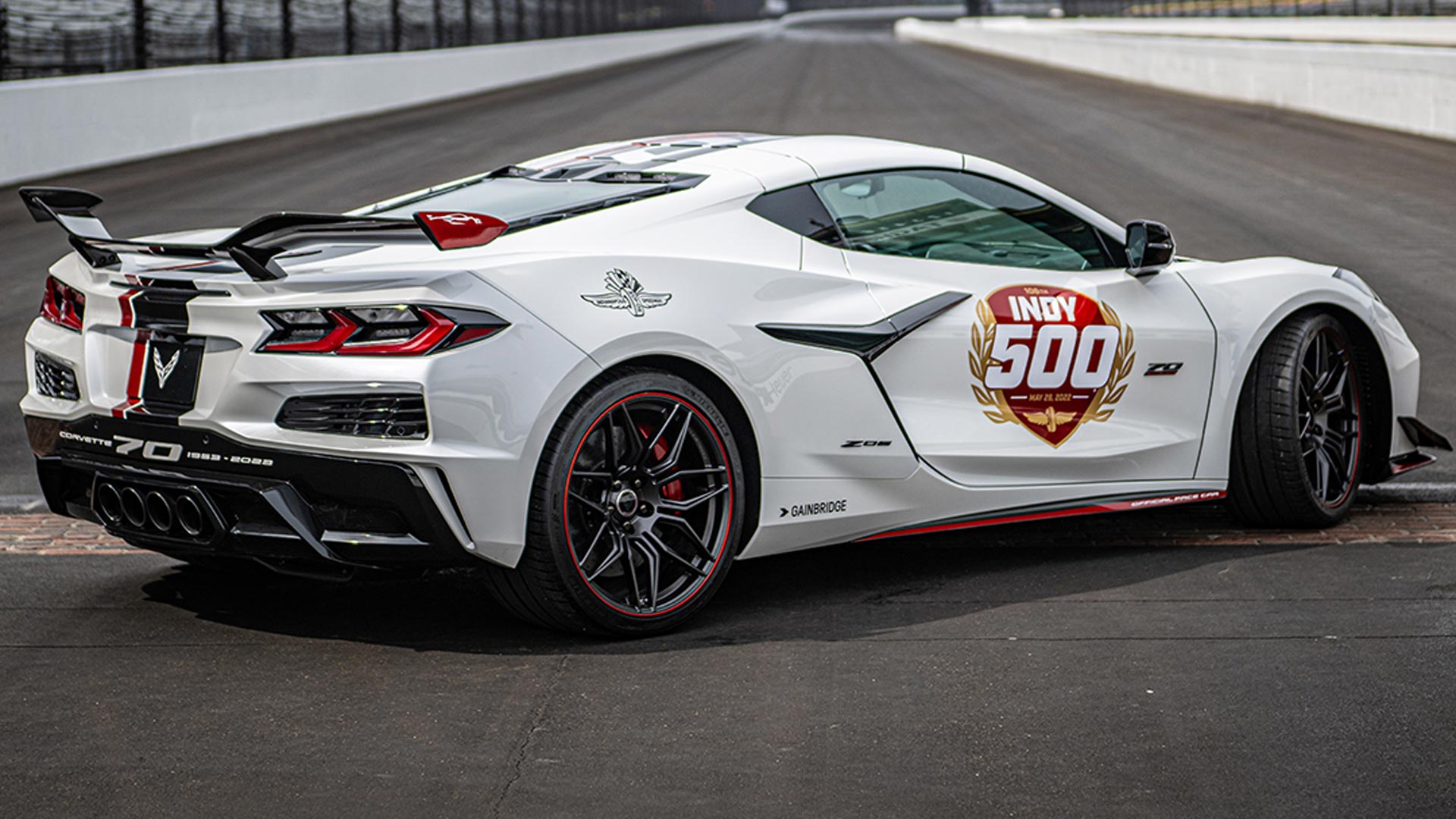
2022 Chevrolet Corvette Z06 70th Anniversary Edition
© GMChevrolet took the lead again for the Indy 500 in 2022, this time with the high-performance C8 Corvette Z06.
Powered by an all-new 5.5-liter V-8 engine, the Z06 serves up 670 horsepower. This makes it the most powerful naturally aspirated V-8 ever fitted to a production car.
This year also saw the Corvette celebrate its 70th anniversary, with a special livery inspired by the commemorative badging on the Z06.
-
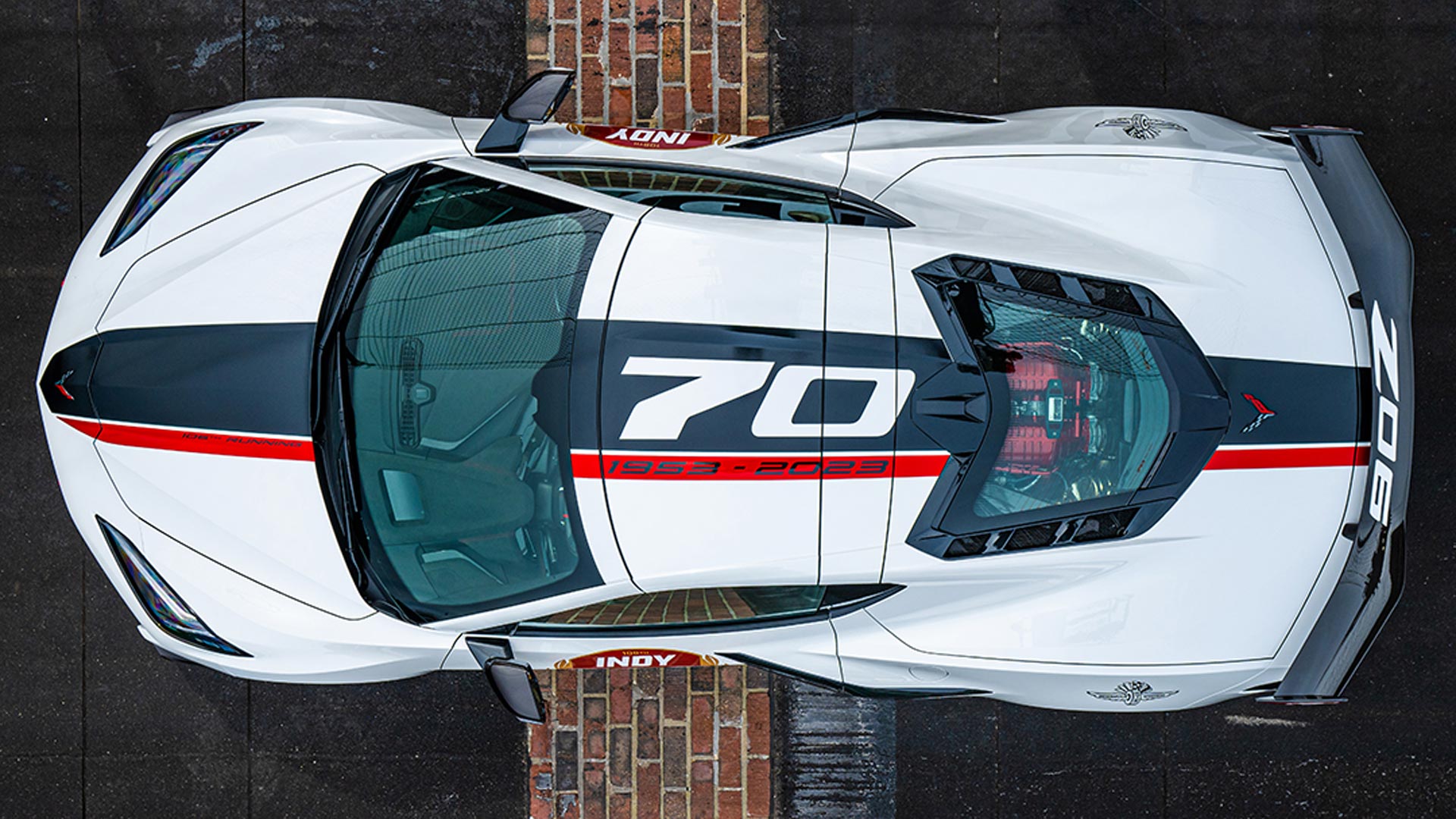
2022 Chevrolet Corvette Z06 70th Anniversary Edition
© GMDriving the Chevrolet Corvette pace car for the 2022 Indy 500 was another successful female racing driver. Sarah Fisher. An Ohio native, Fisher competed in the race nine times between 2000 and 2010.
She still holds the record for being the fastest woman to race in the 500, with a four-lap qualifying speed of 229.439 mph, set in 2002.
Fisher has also spent time as an IndyCar team owner, and has continued to undertake pace car duties for the series.
-
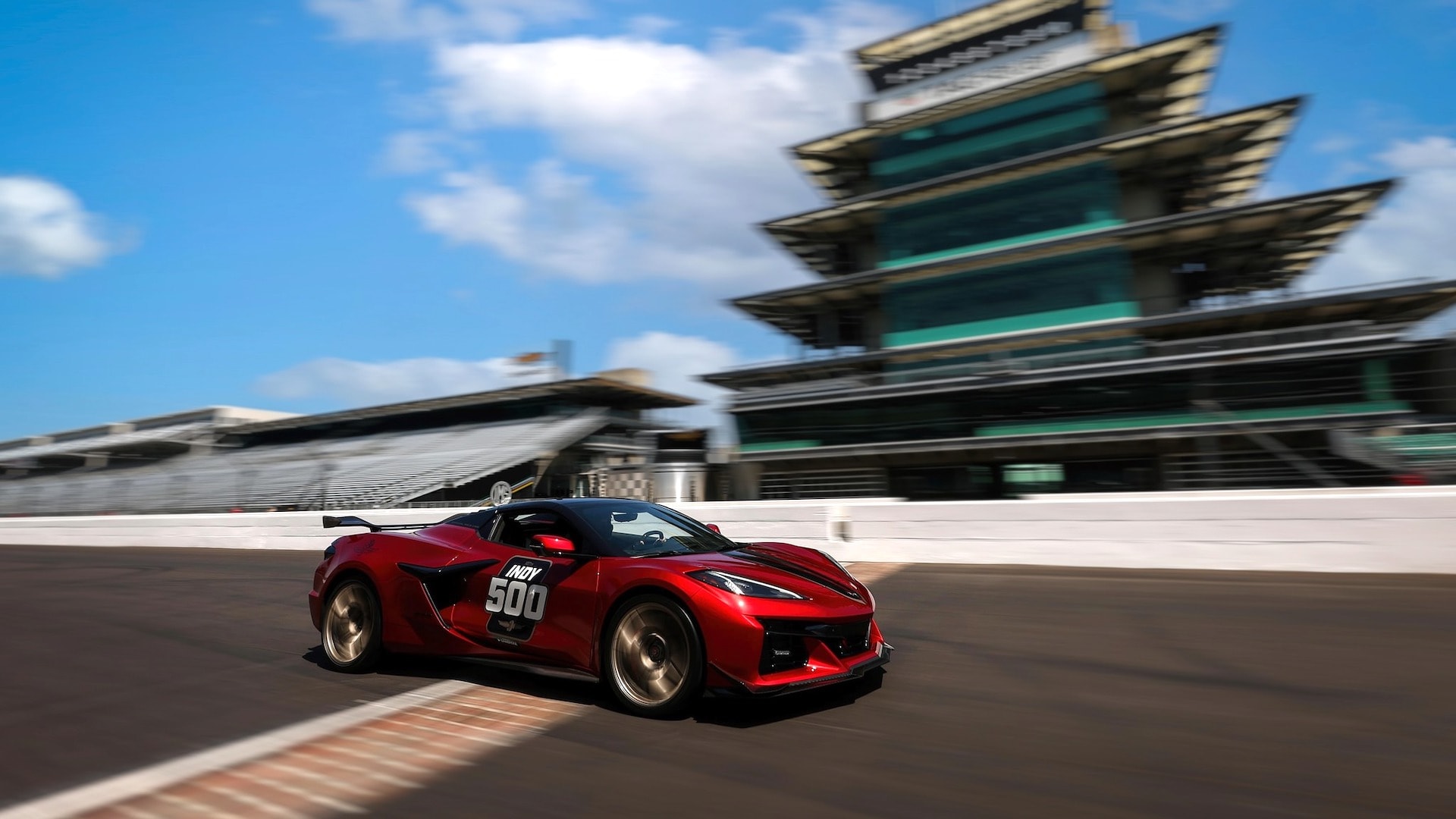
2023 Chevrolet Corvette Z06 Hardtop Convertible
© GMFor the 2023 edition of the ‘Greatest Spectacle in Racing’, it’s perhaps no surprise that a Chevrolet Corvette will lead the field at the start of the race.
Chevy has chosen to offer the open-top version of the 670 horsepower Corvette Z06 for official duties. The new model is the 34th Chevrolet in charge of the great race – and 20th example of a Corvette.
-
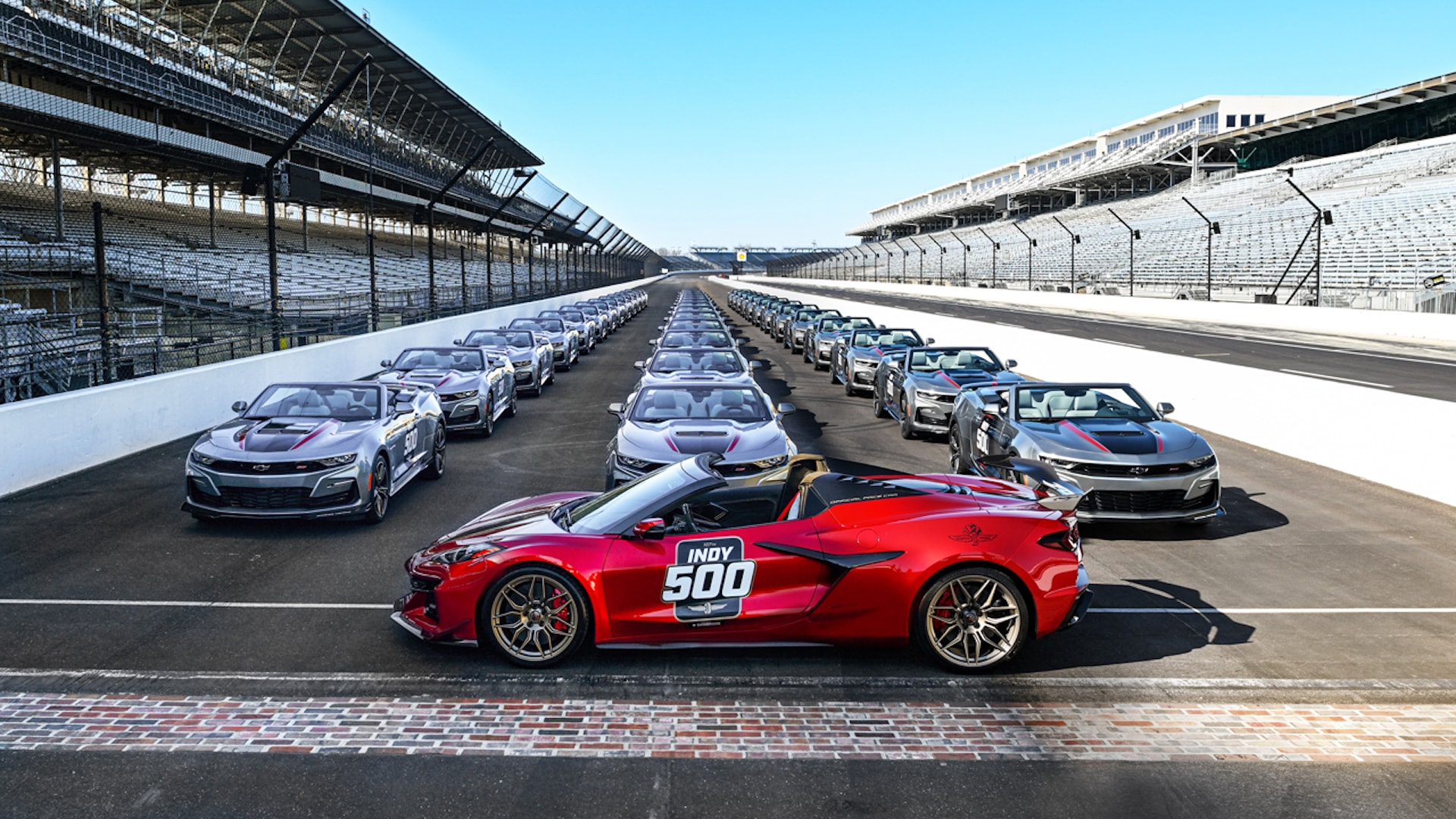
2023 Chevrolet Corvette Z06 Hardtop Convertible
© GMThe Corvette Z06 chosen as the pace car is finished in Red Mist Metallic paint, with two-tone Jet Black and Sky Cool Gray highlights. It also wears forged aluminum wheels in Tech Bronze, and boasts Torch Red details inside.
IMS President J. Douglas Boles said: “The hardtop convertible on the 2023 Corvette Z06 is just another example of the Chevrolet innovation that translates from track to street”.
With IndyCar making a switch to hybrid power for 2024, do not be surprised if a Chevrolet Corvette E-Ray hybrid ends up leading the field at next year’s Indy 500…